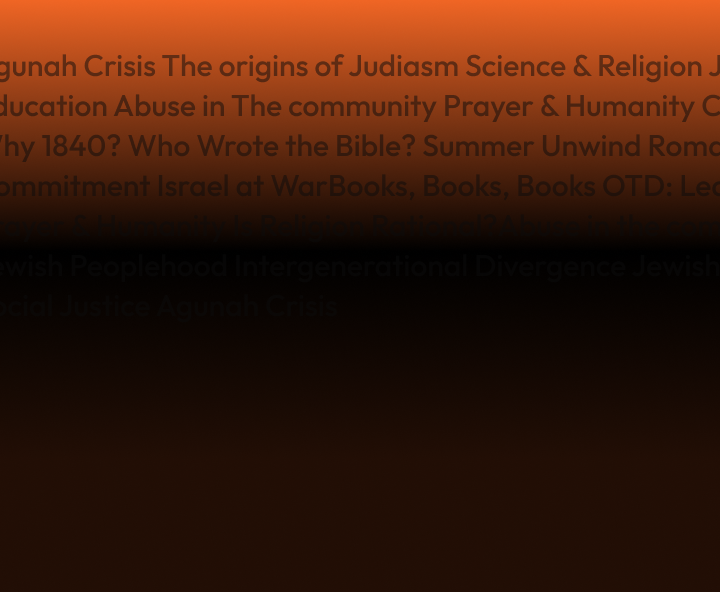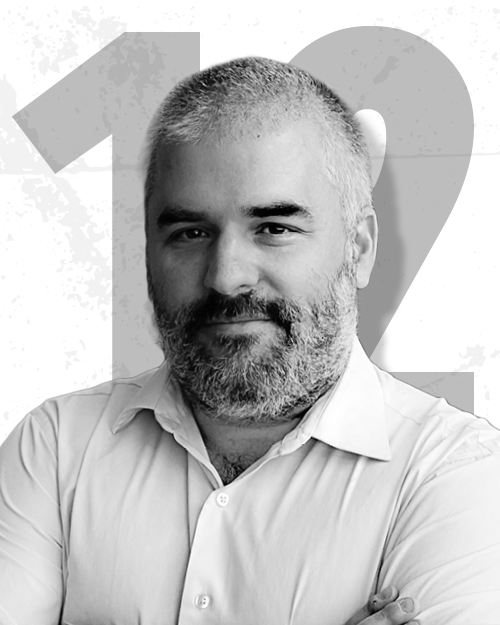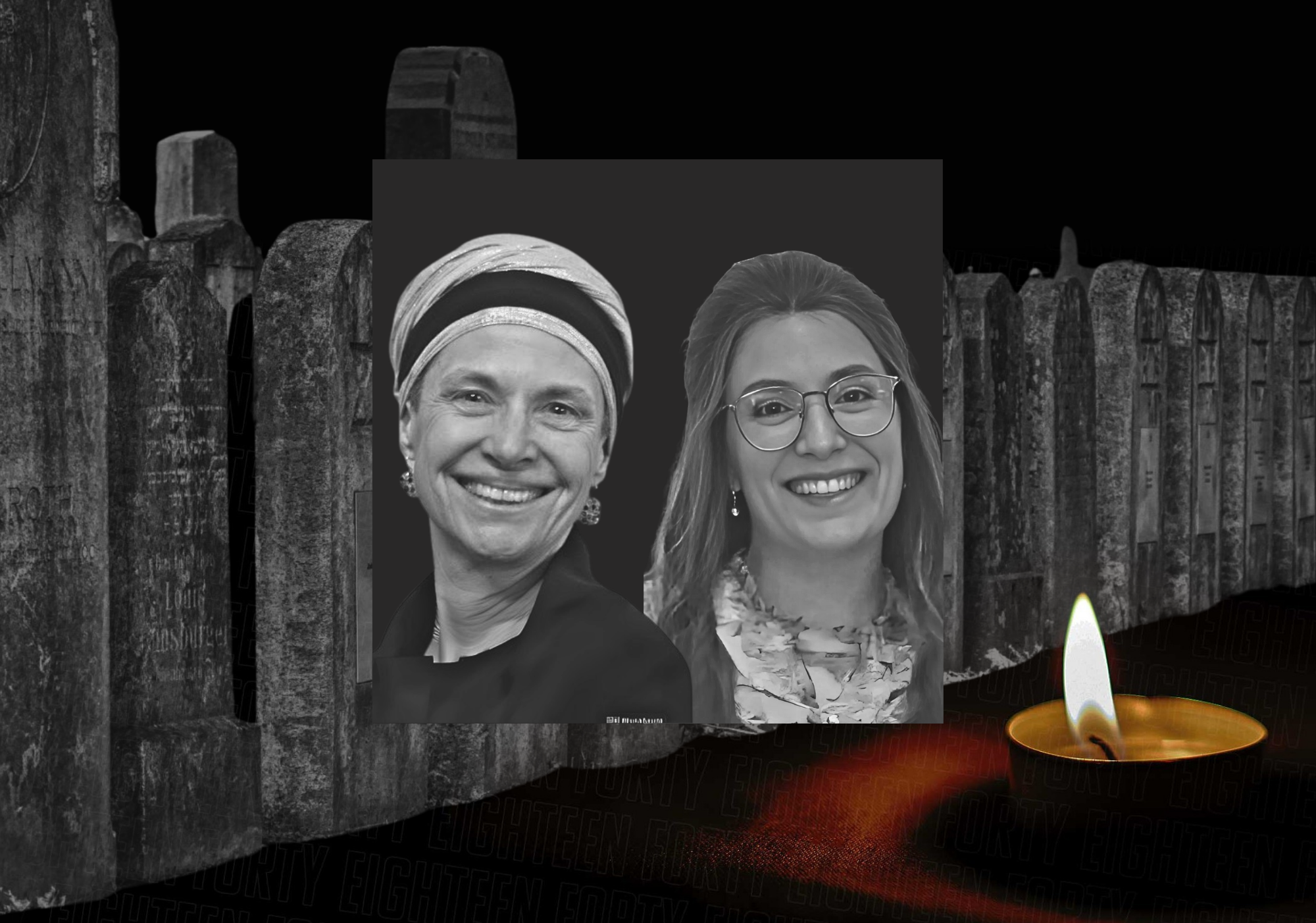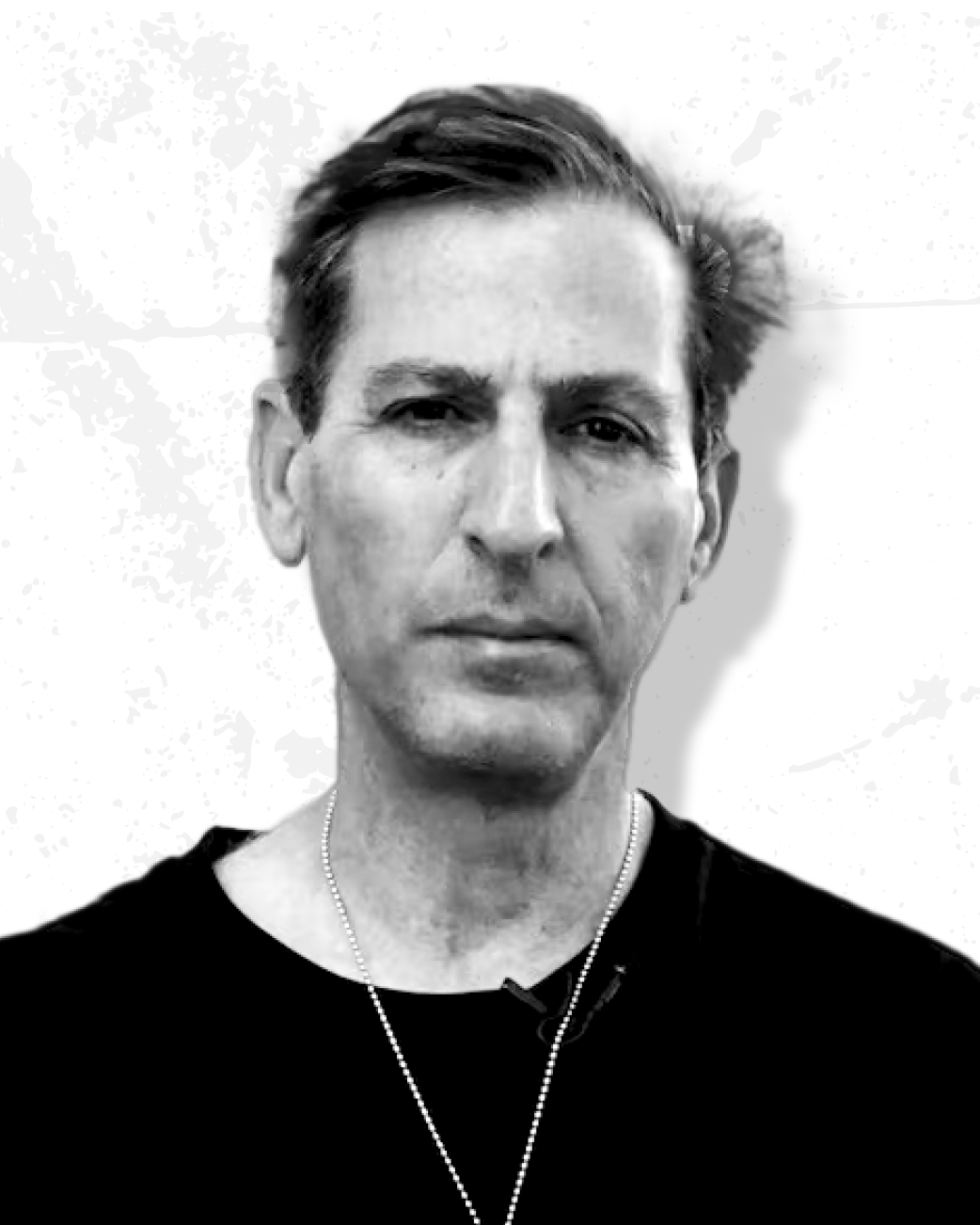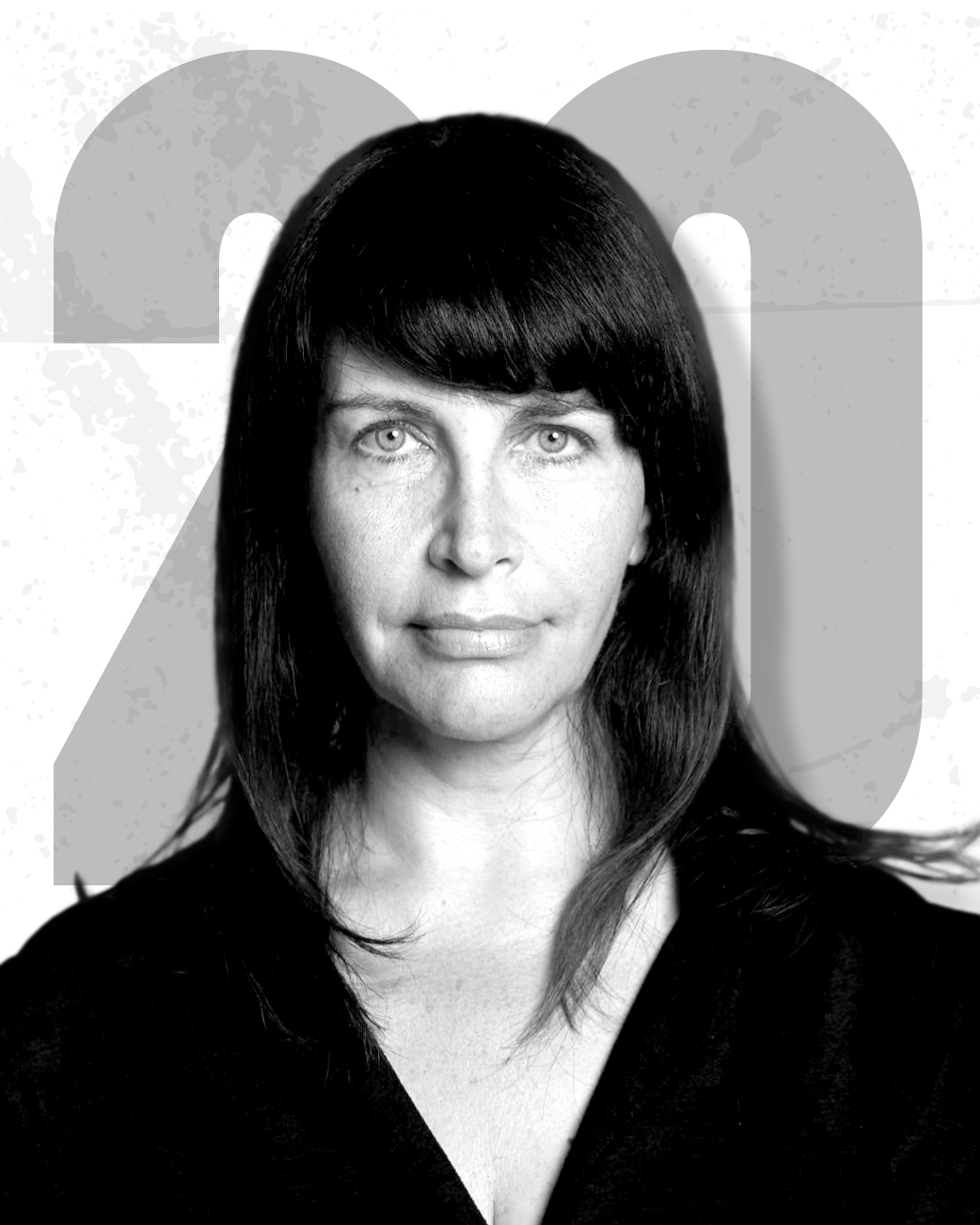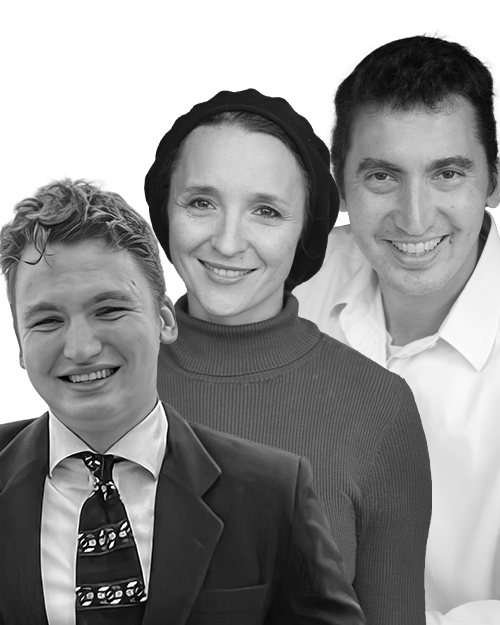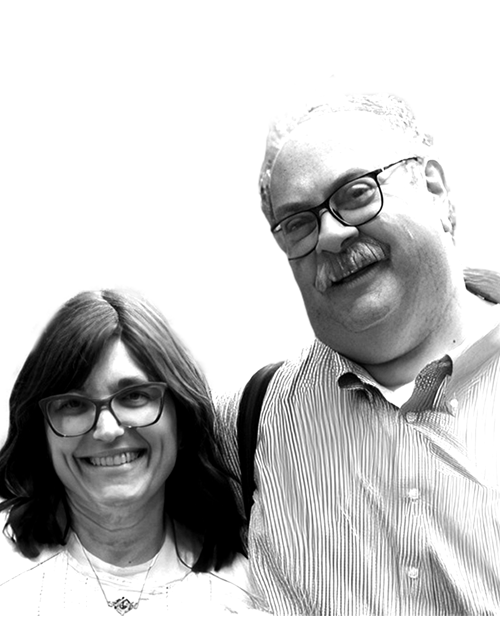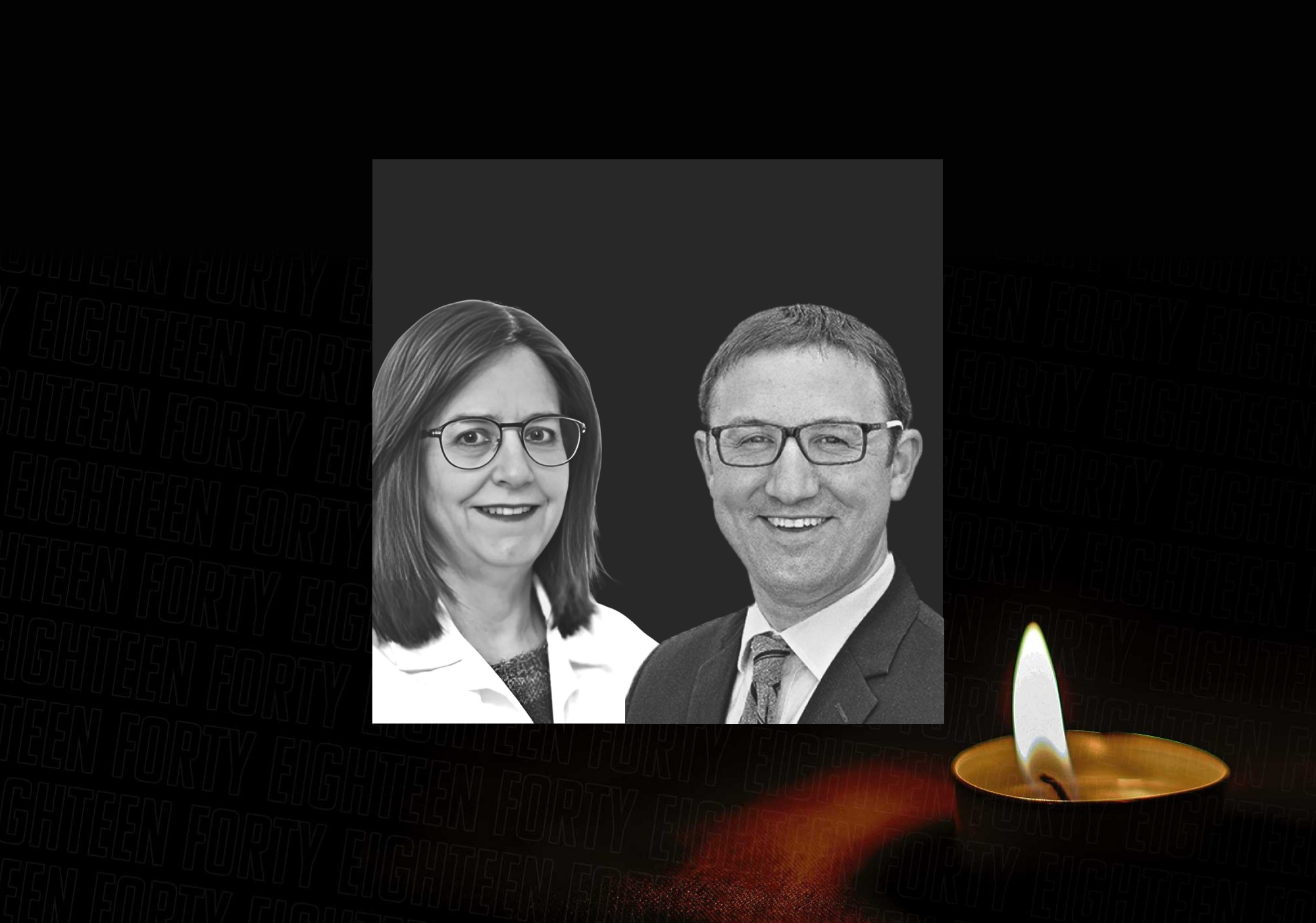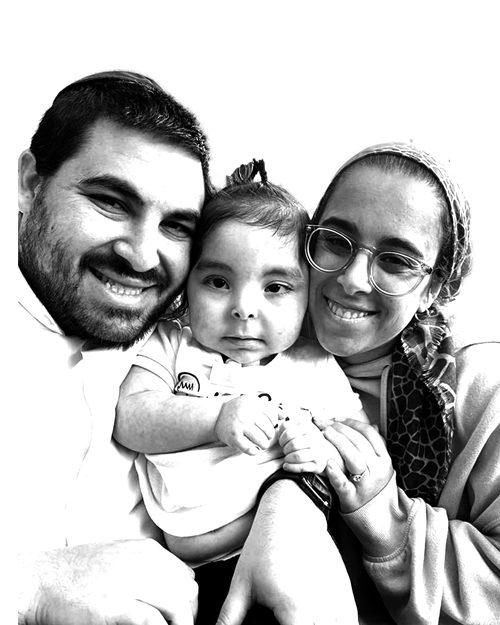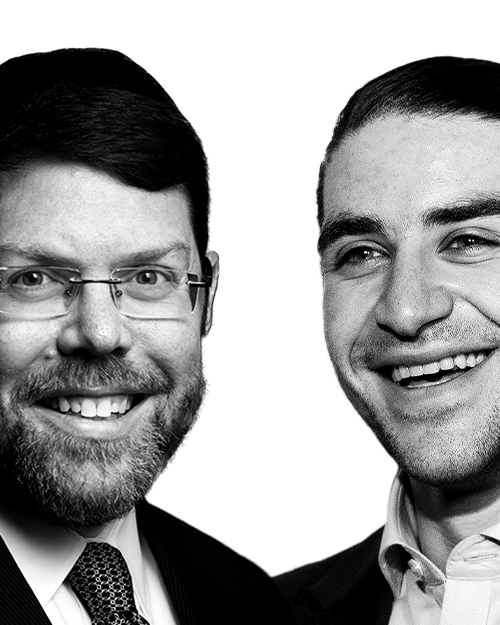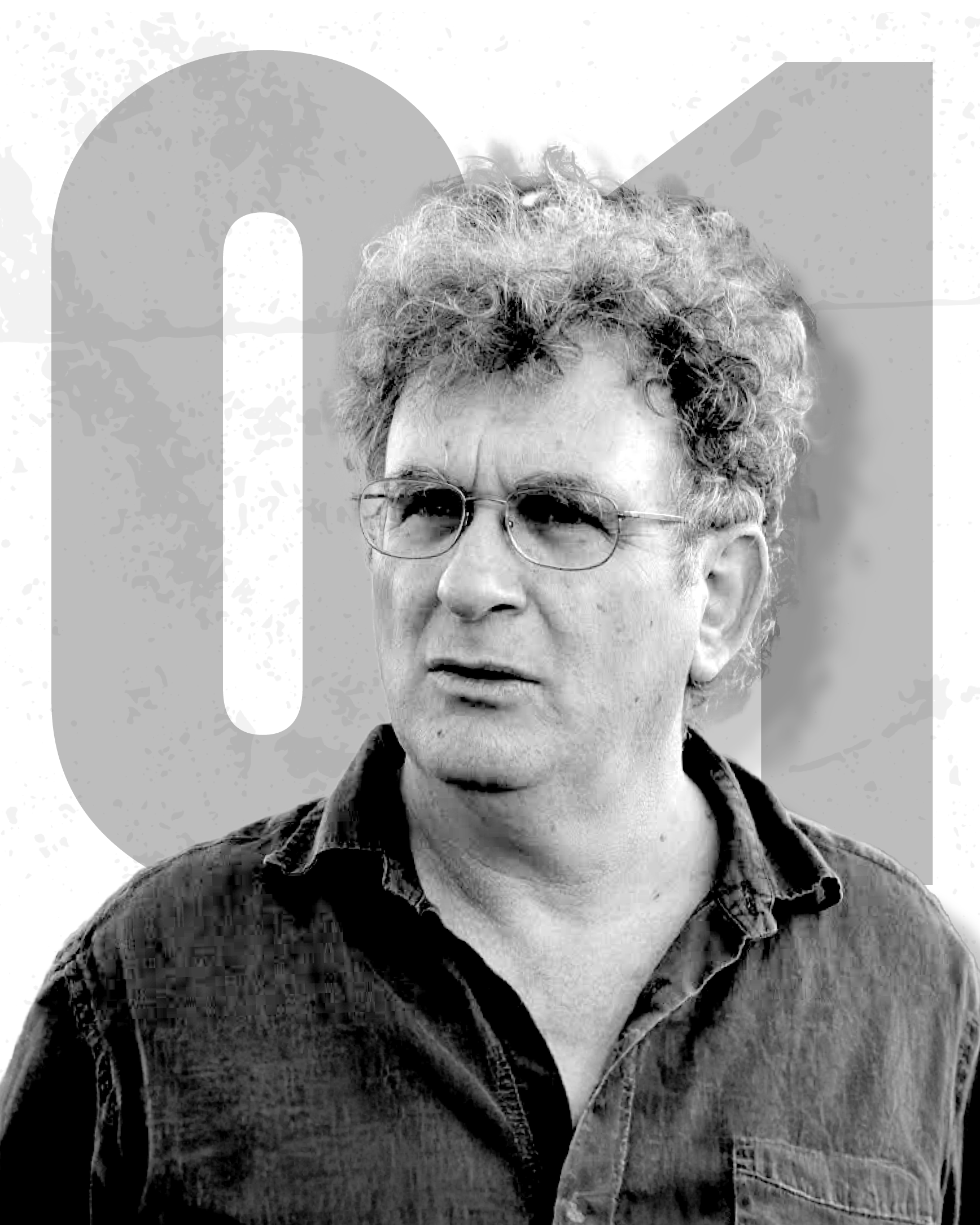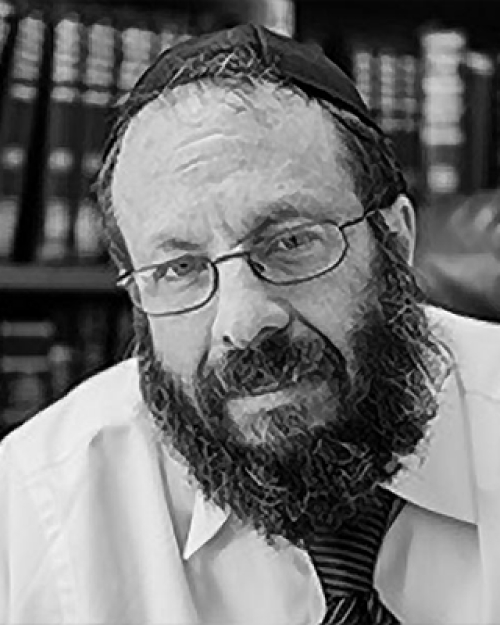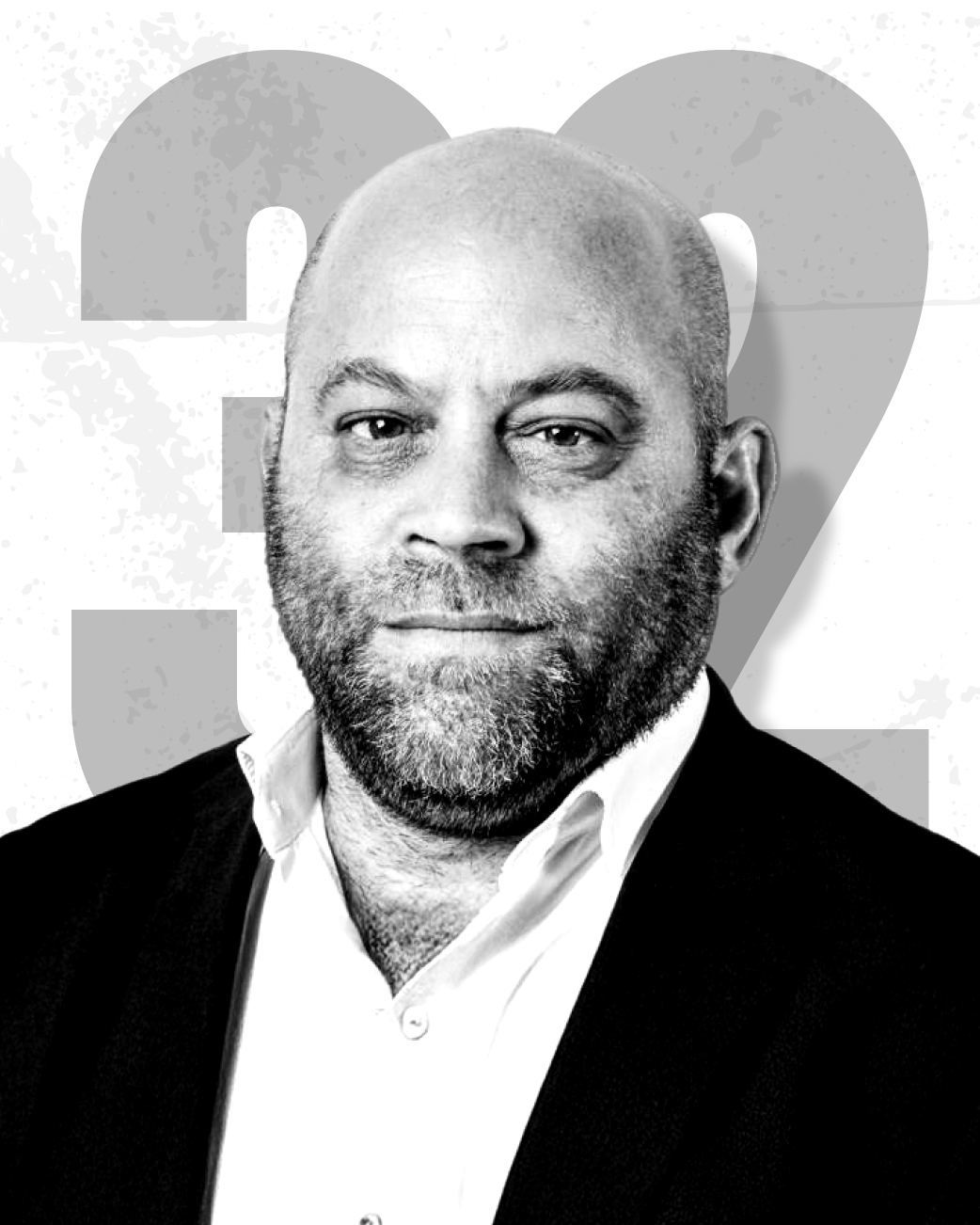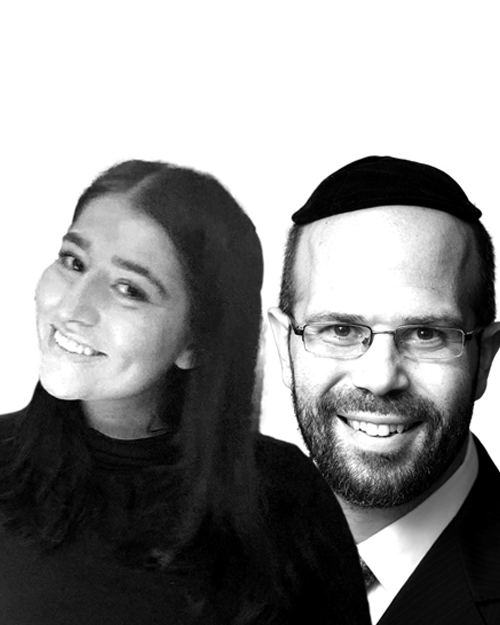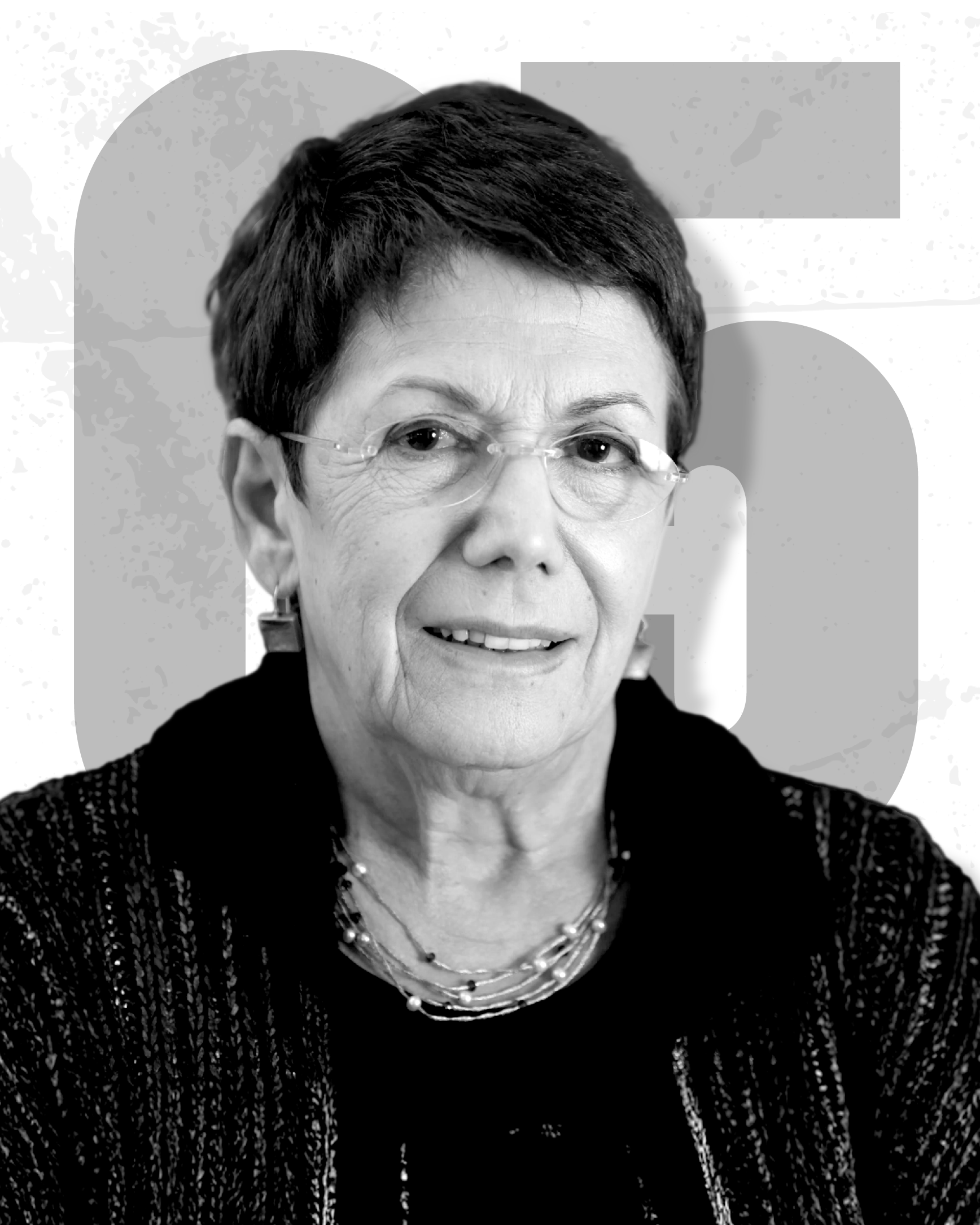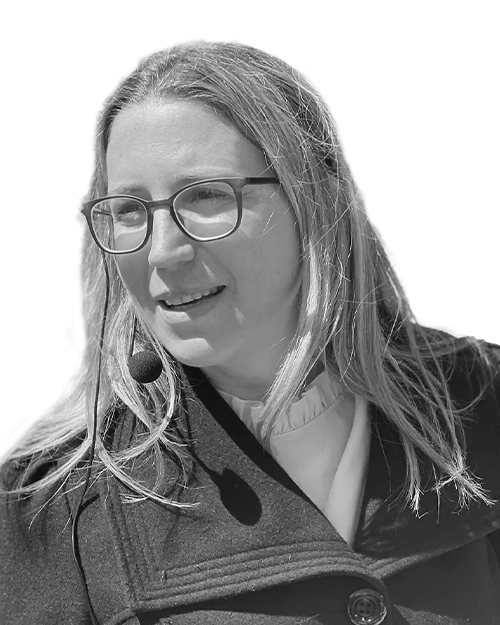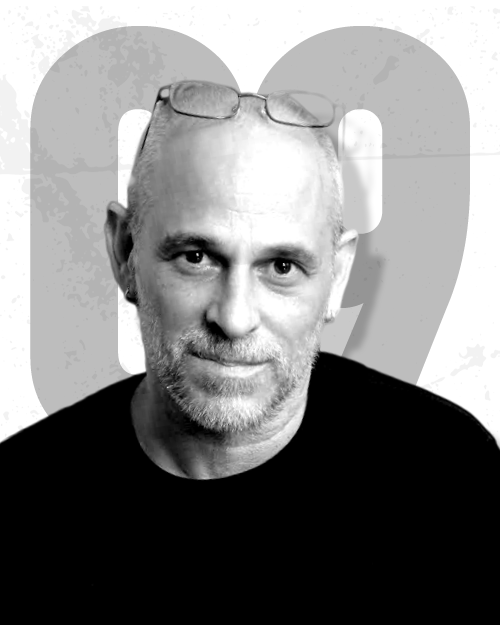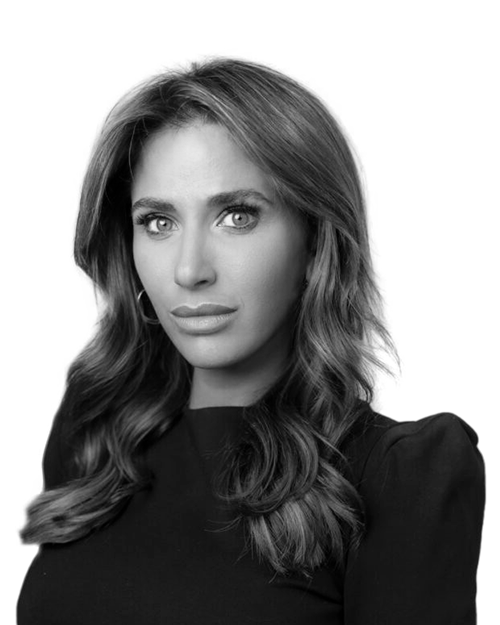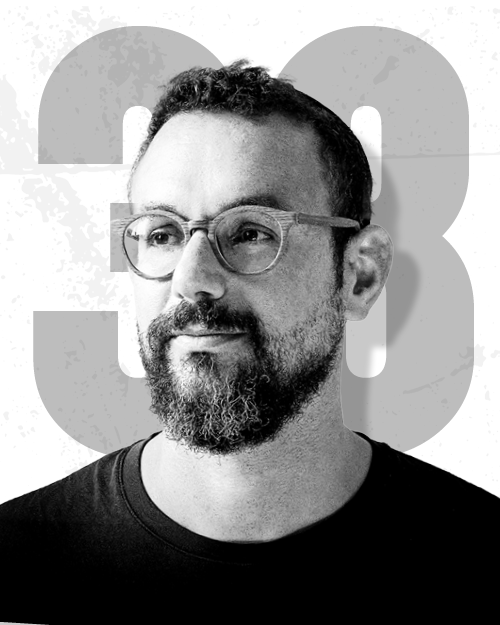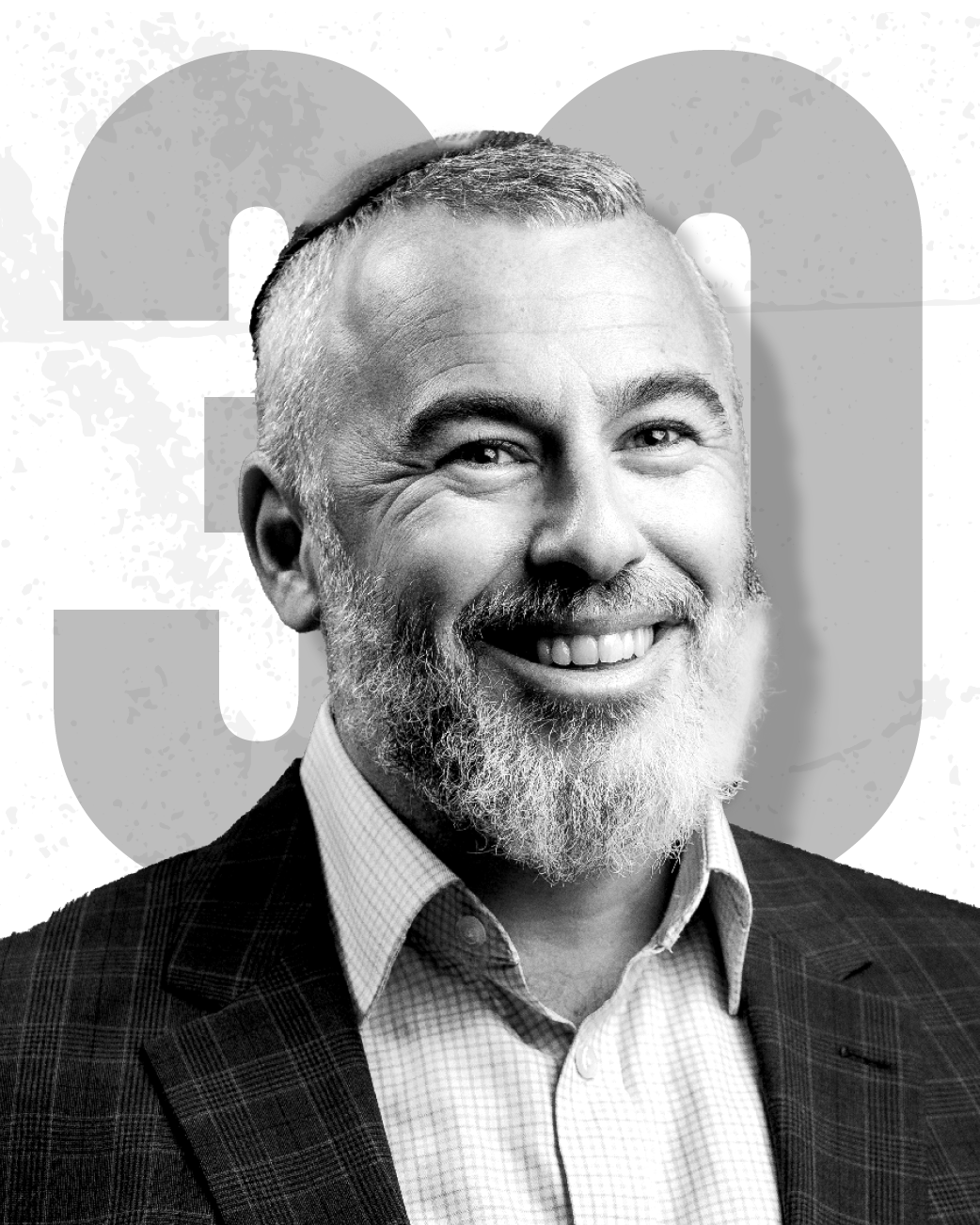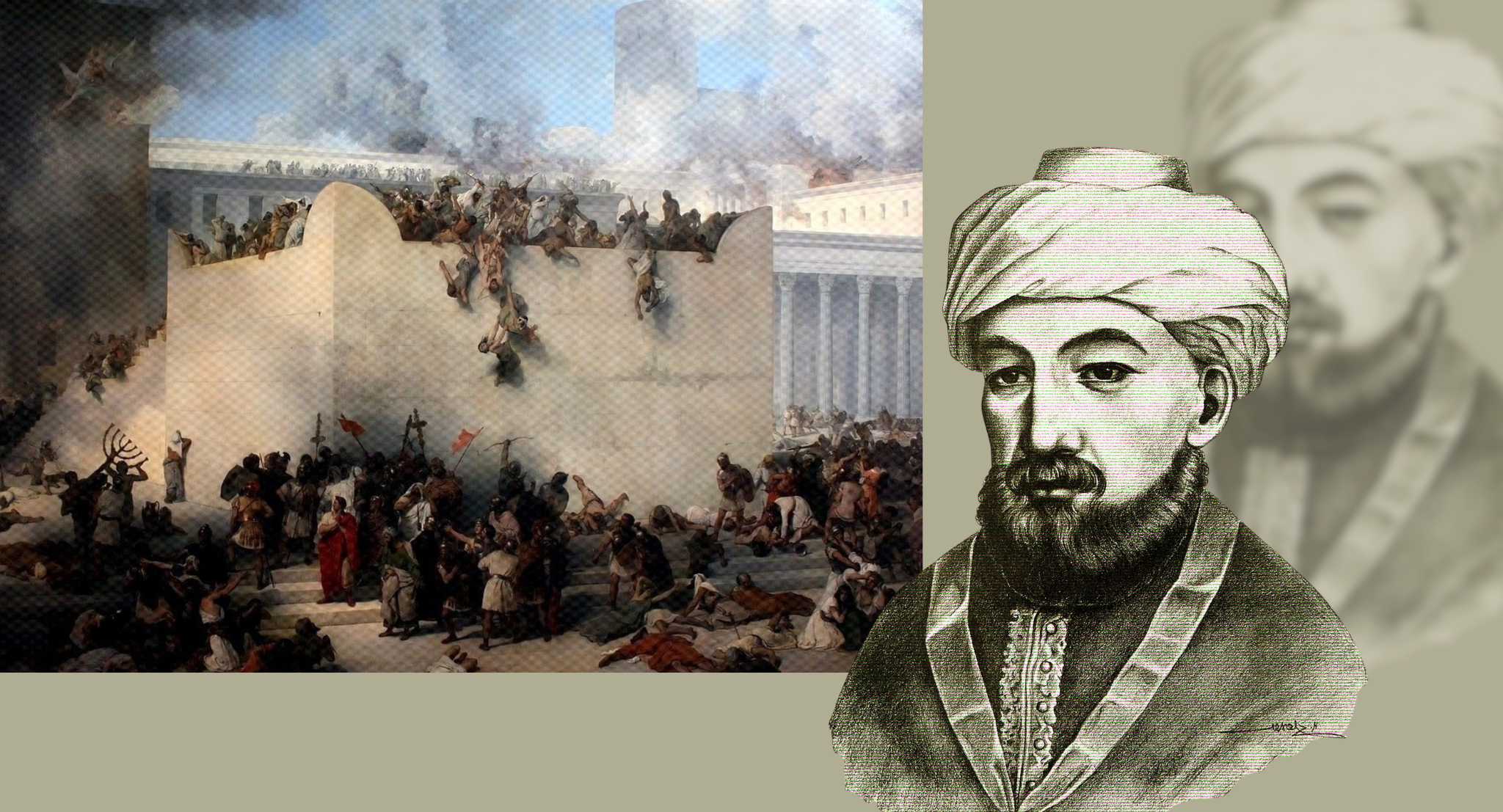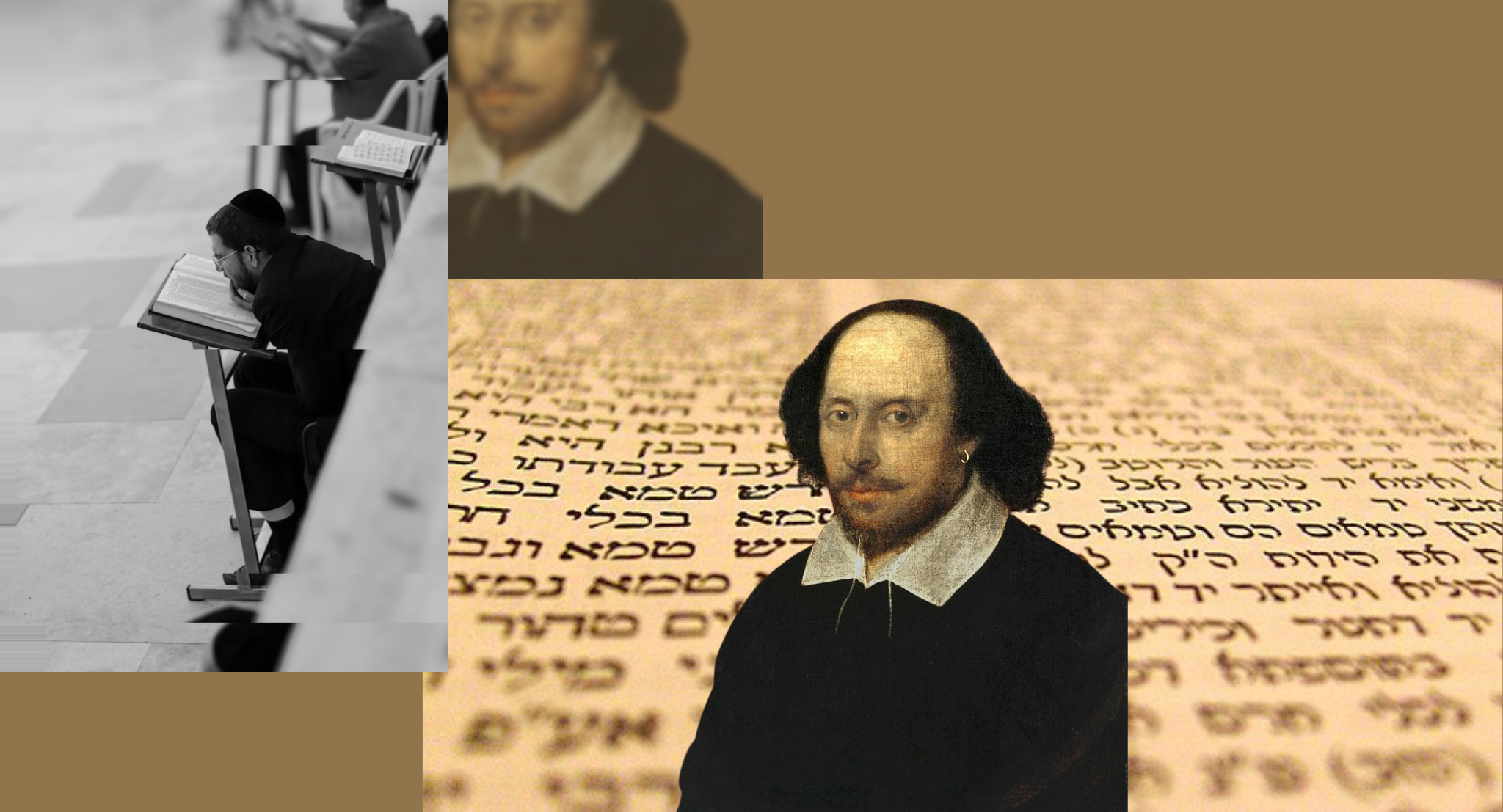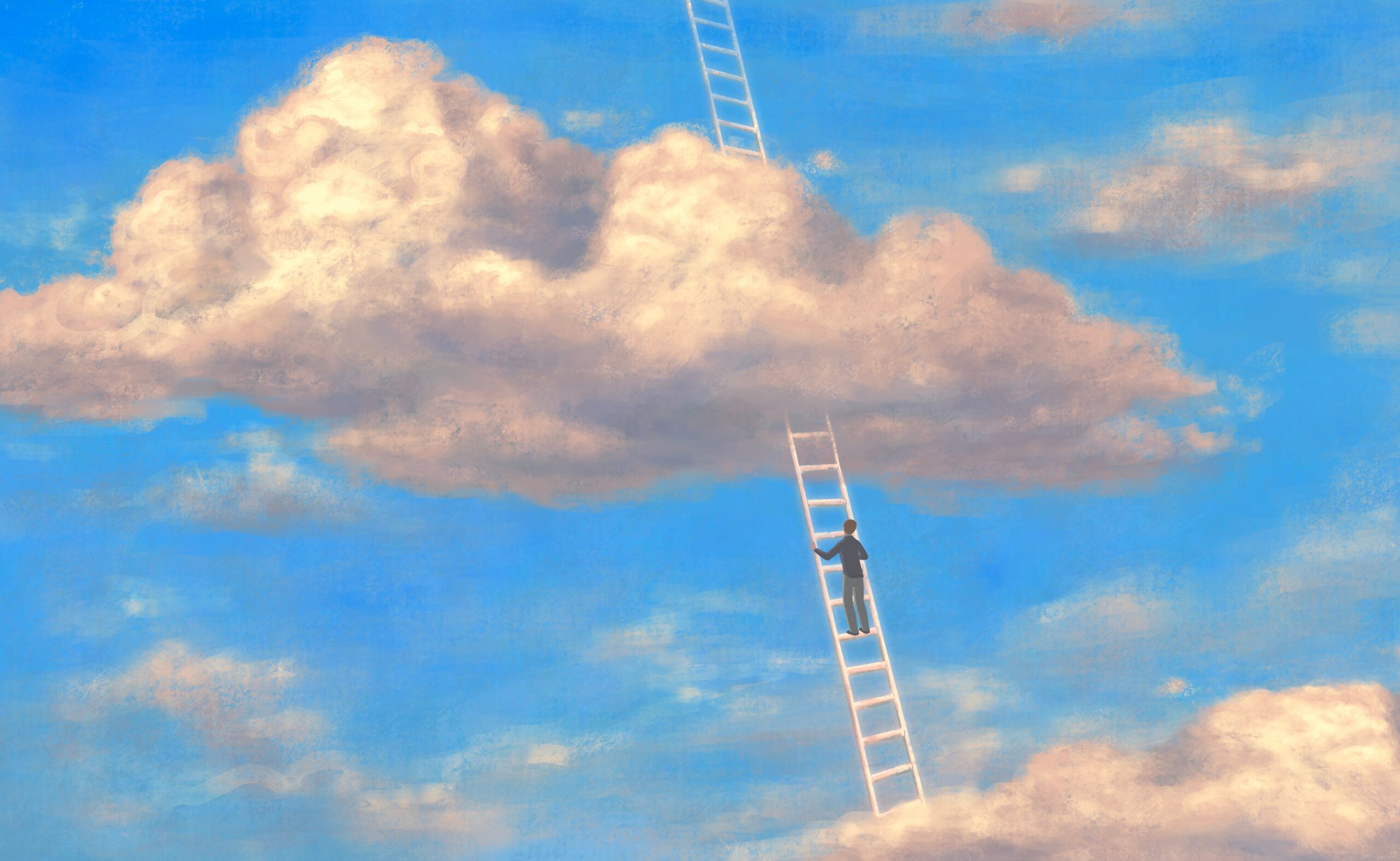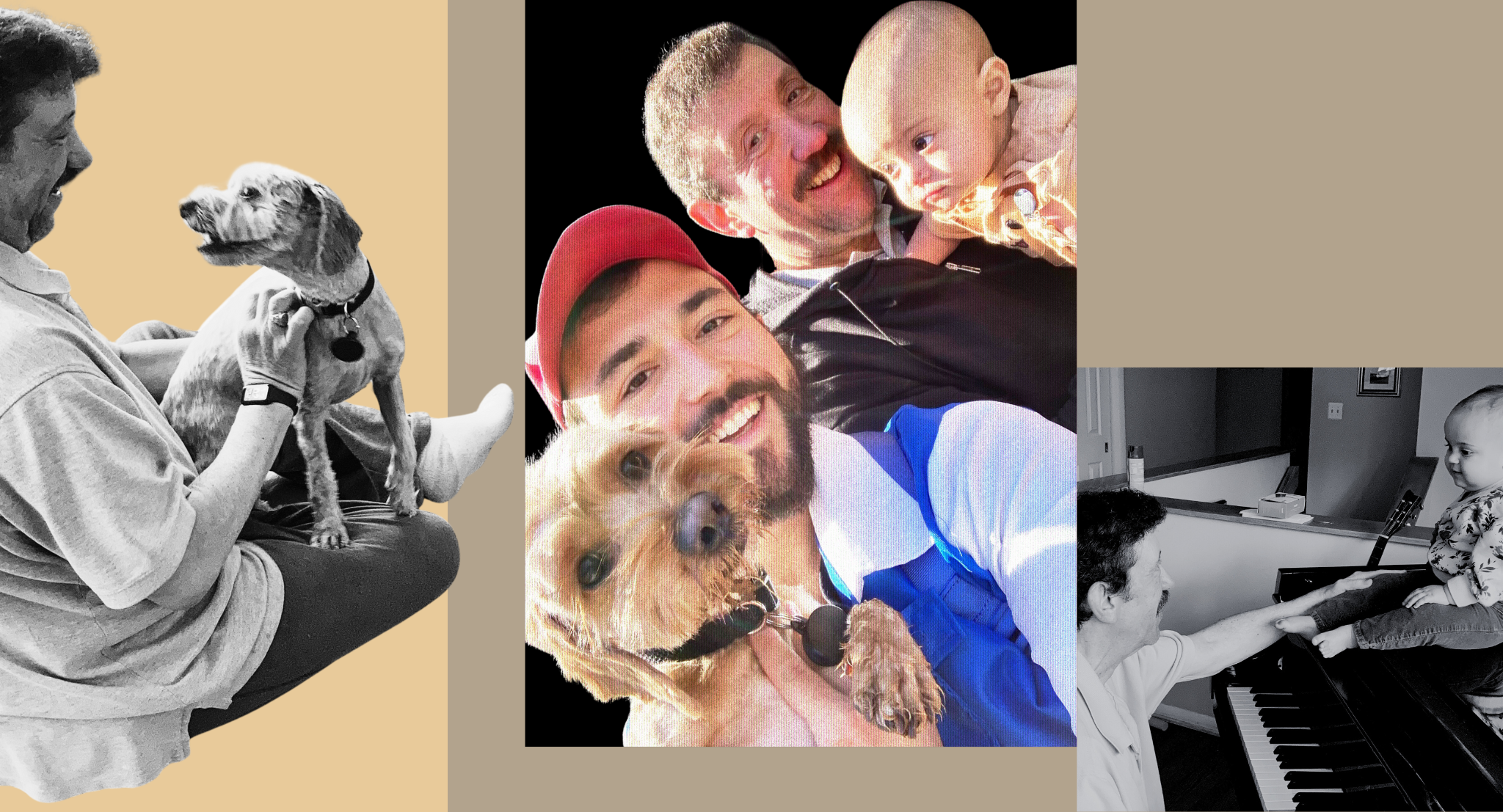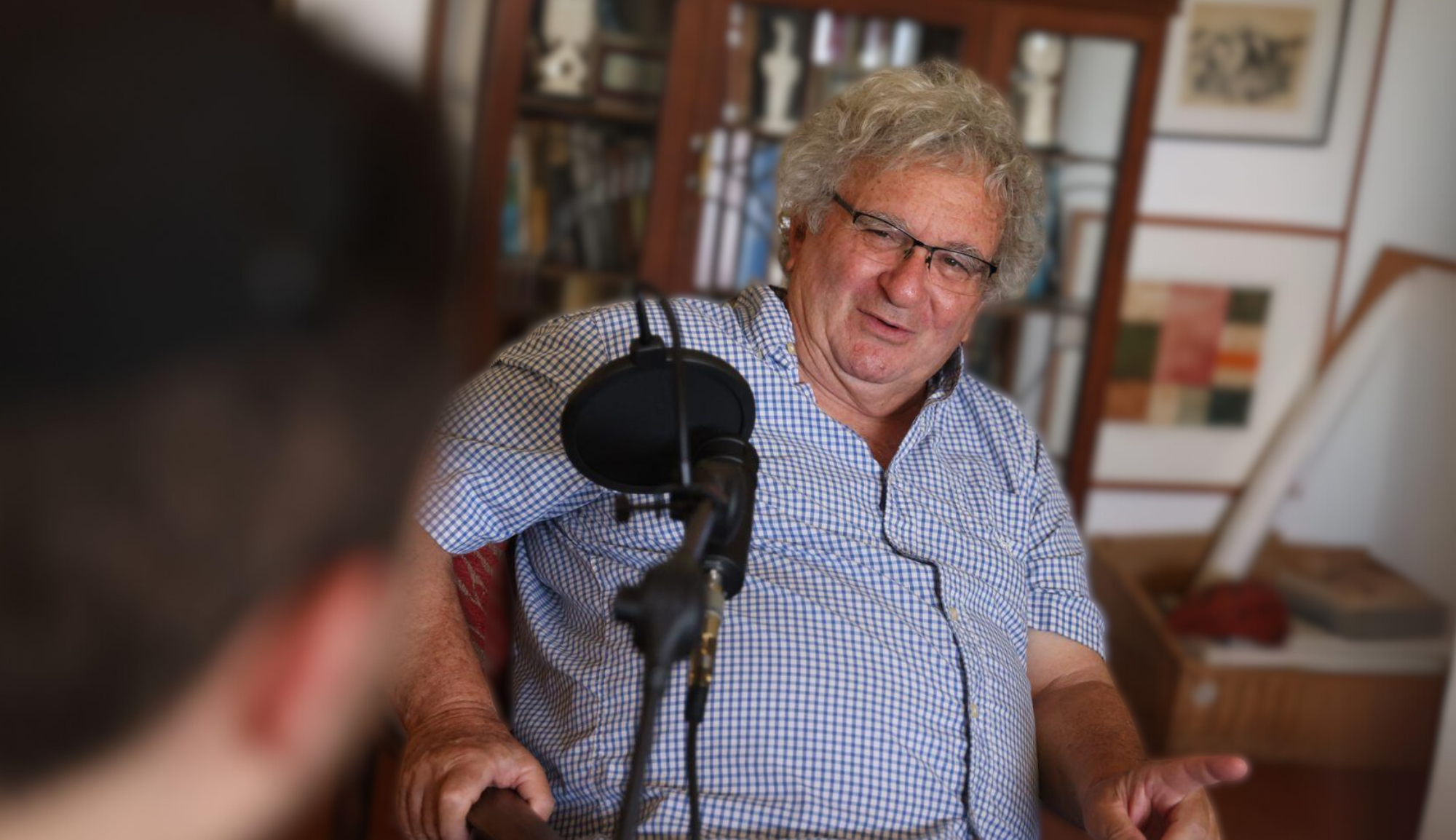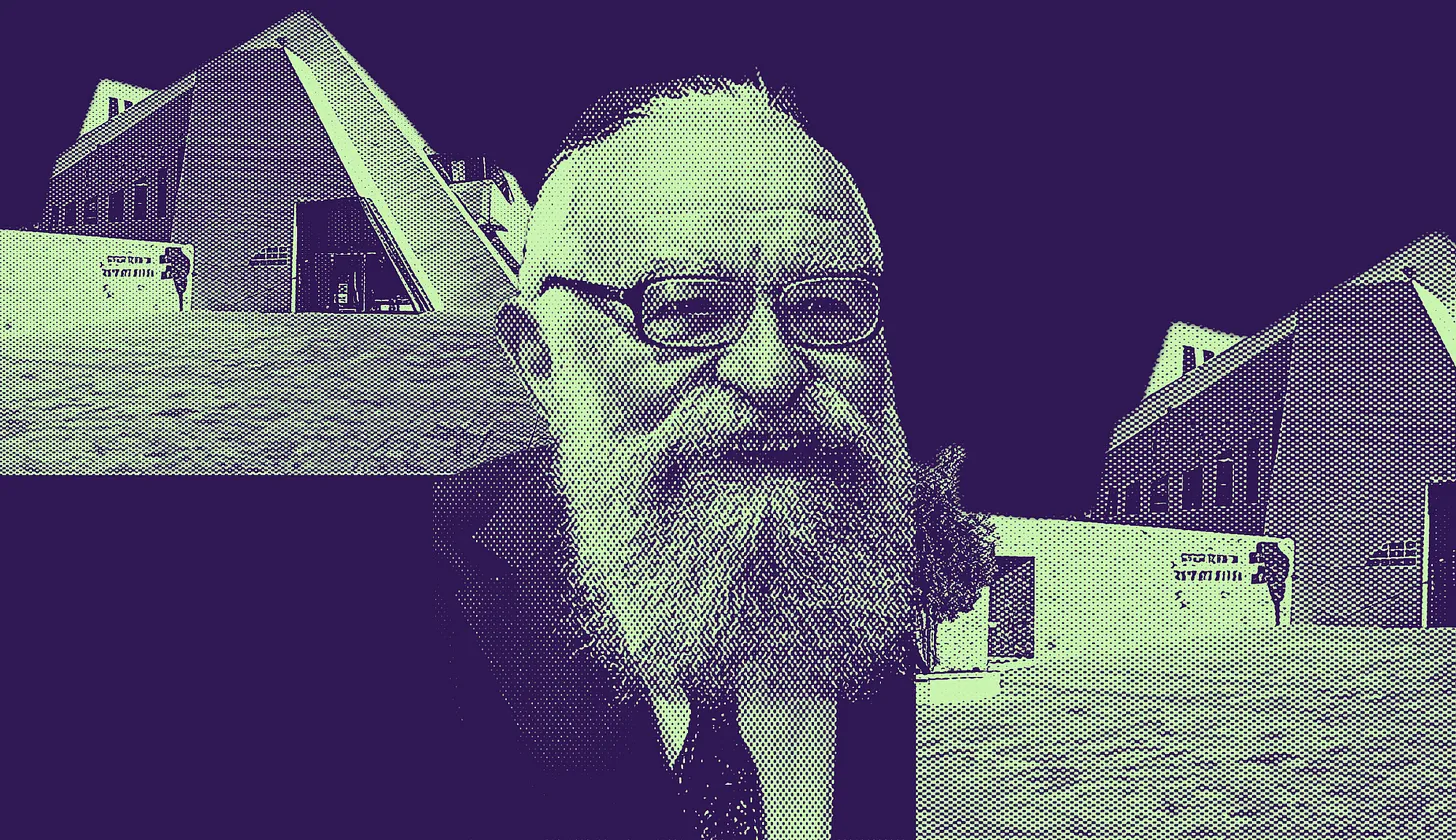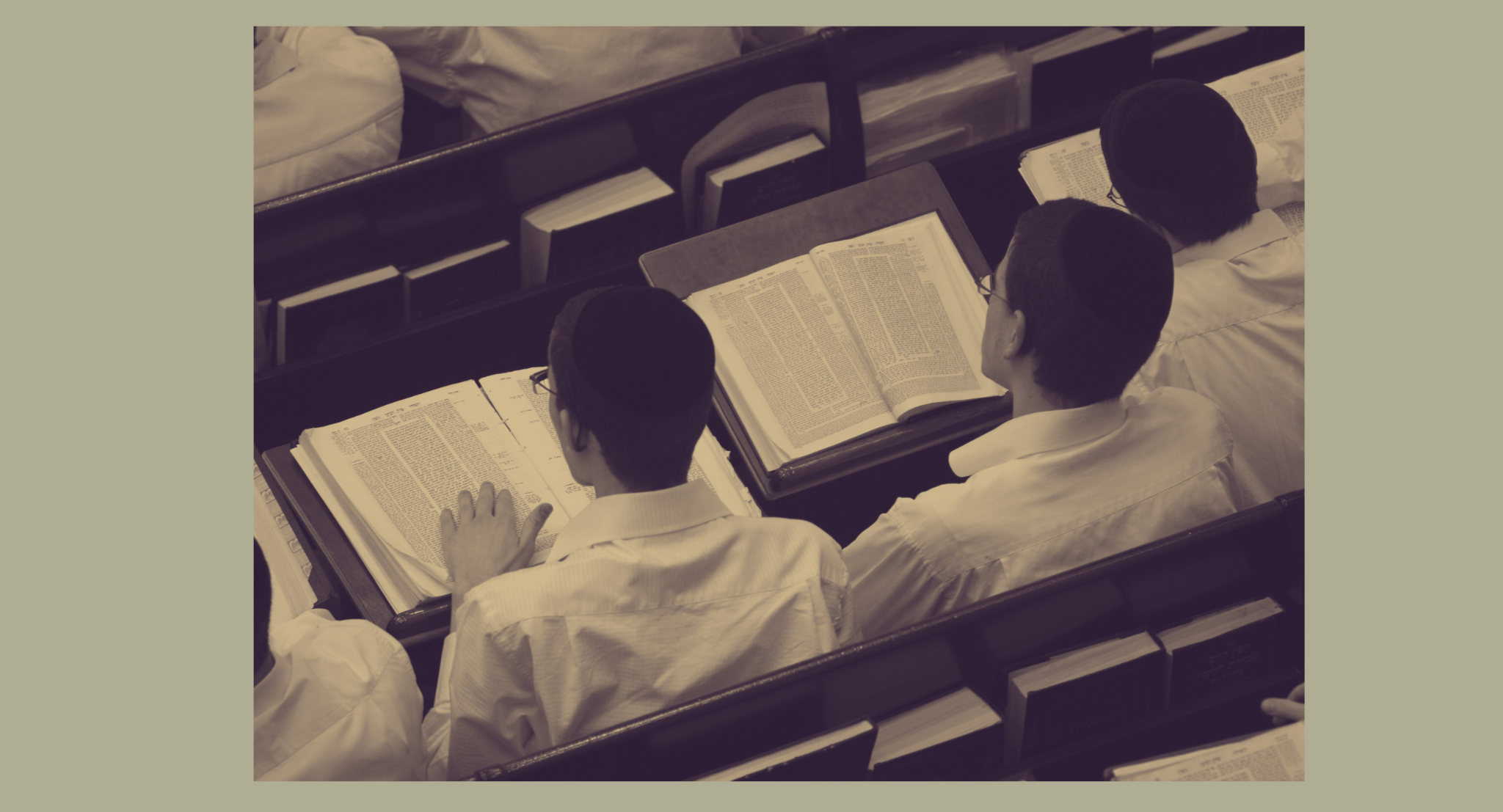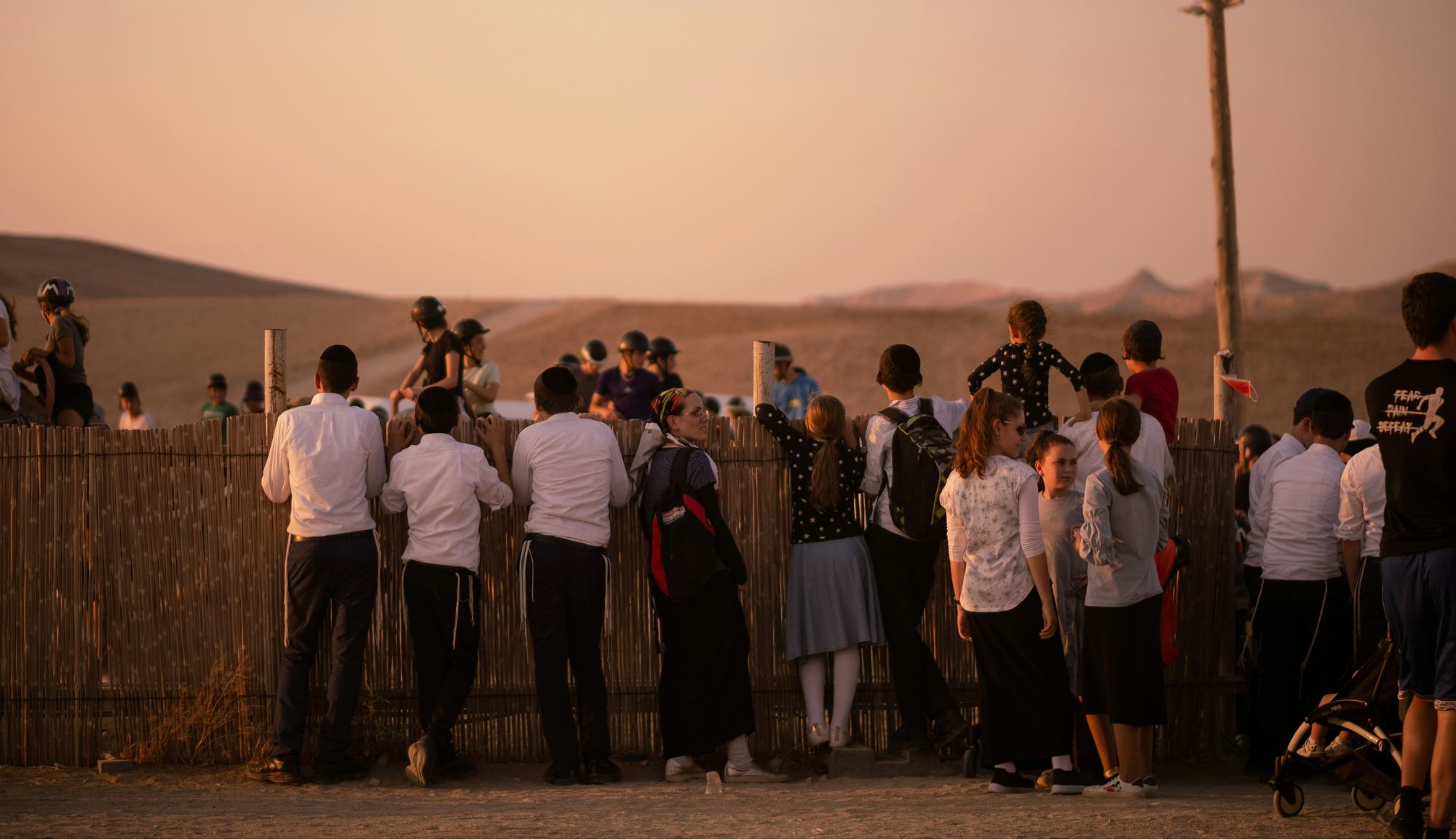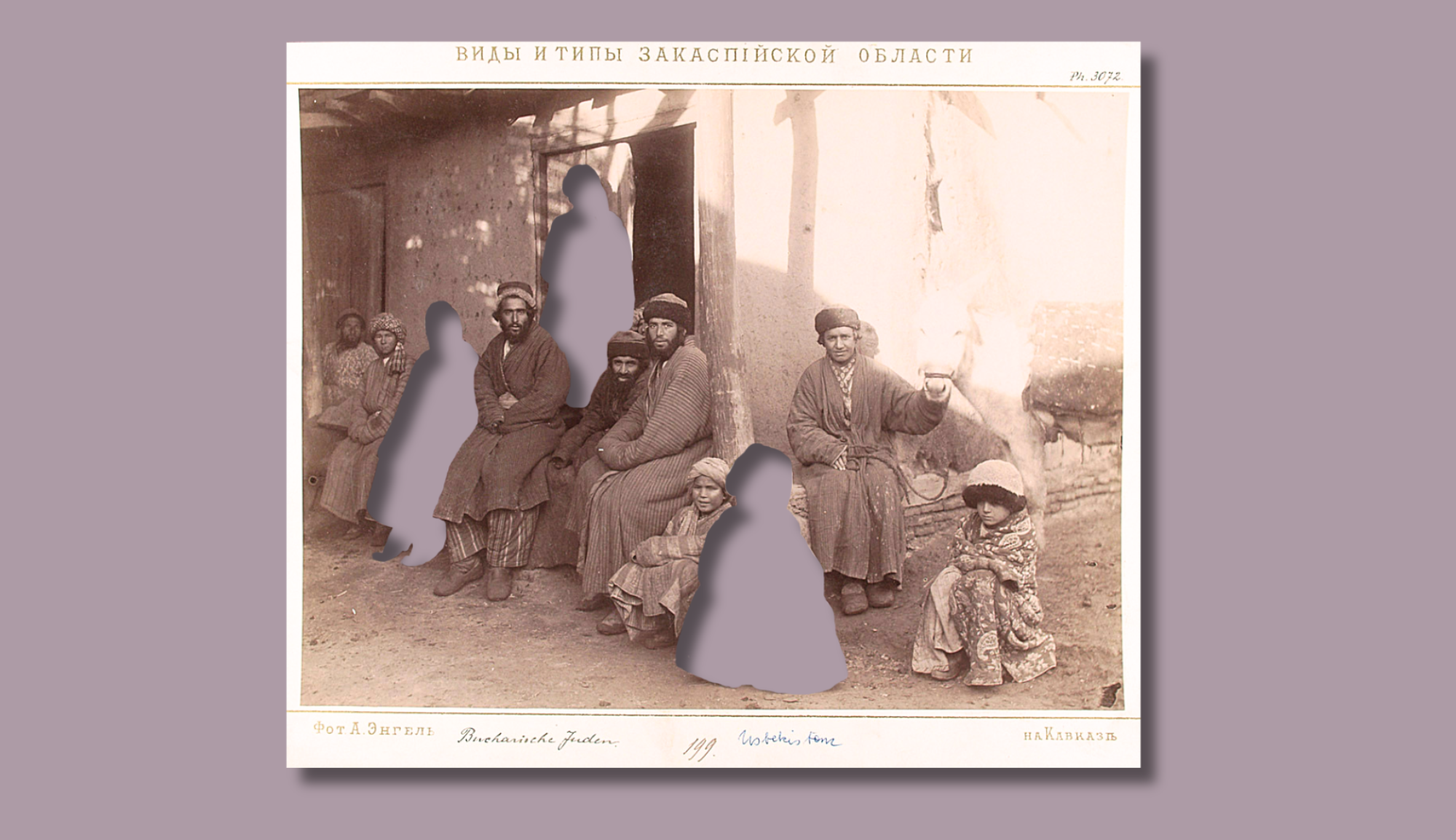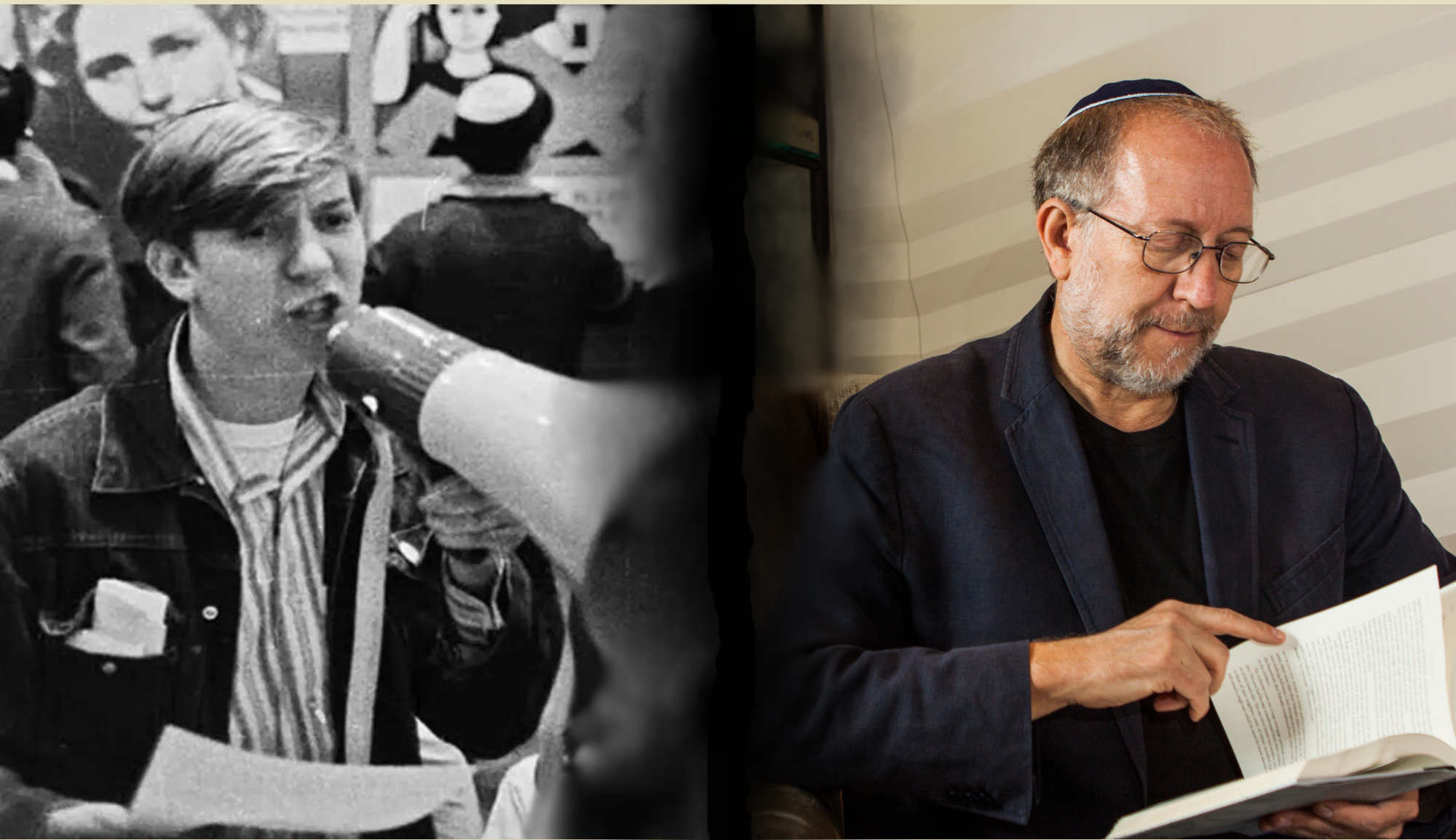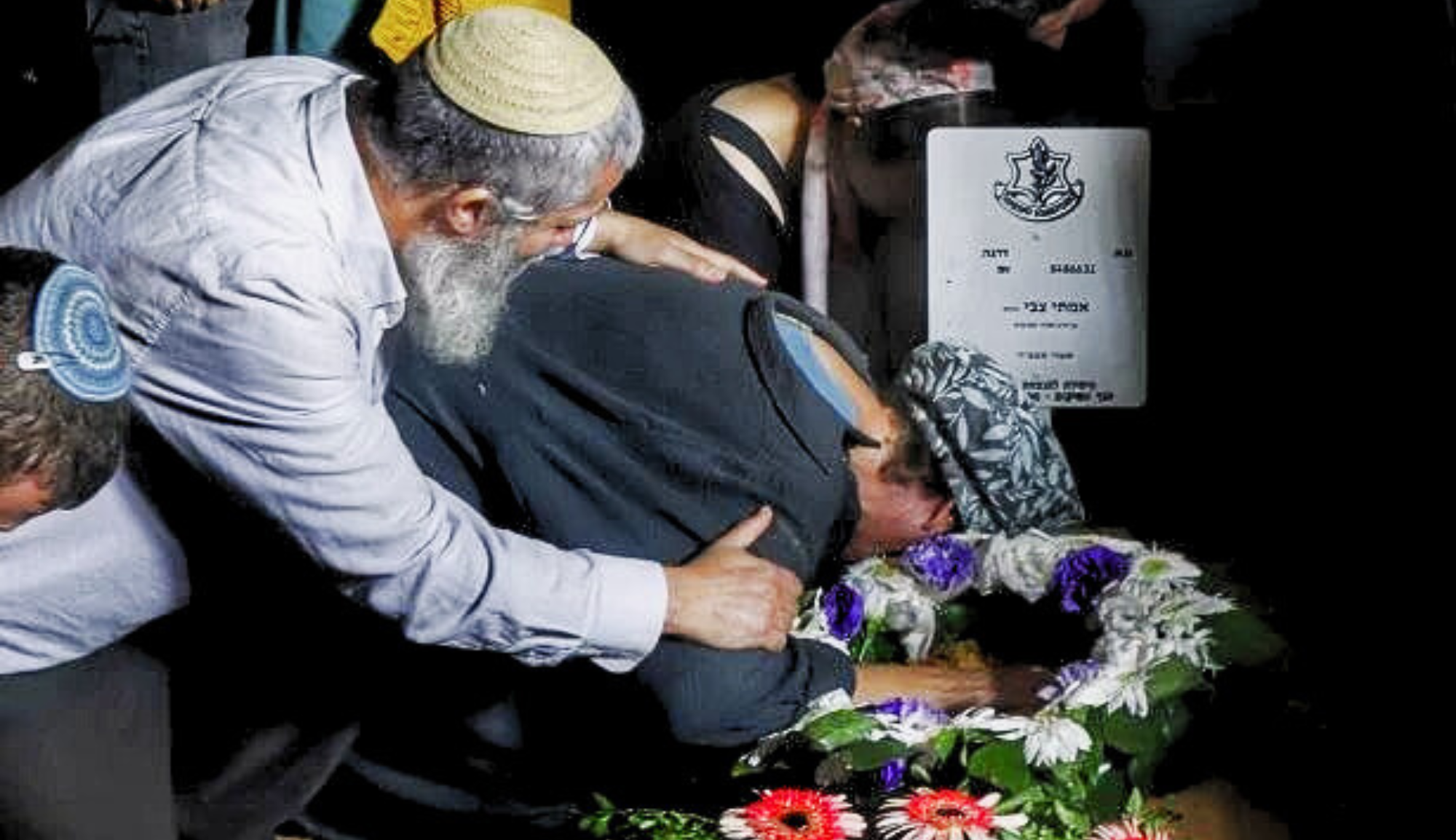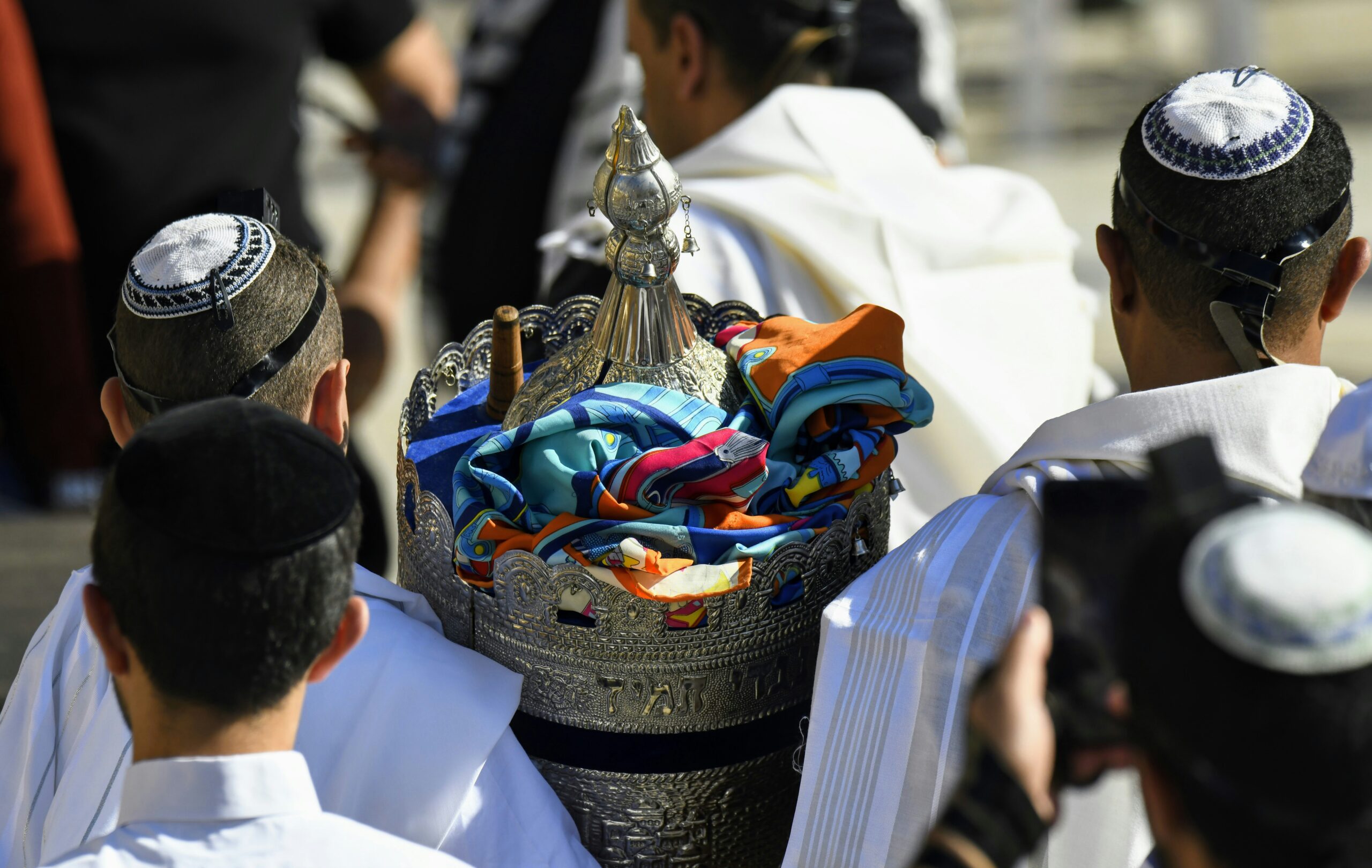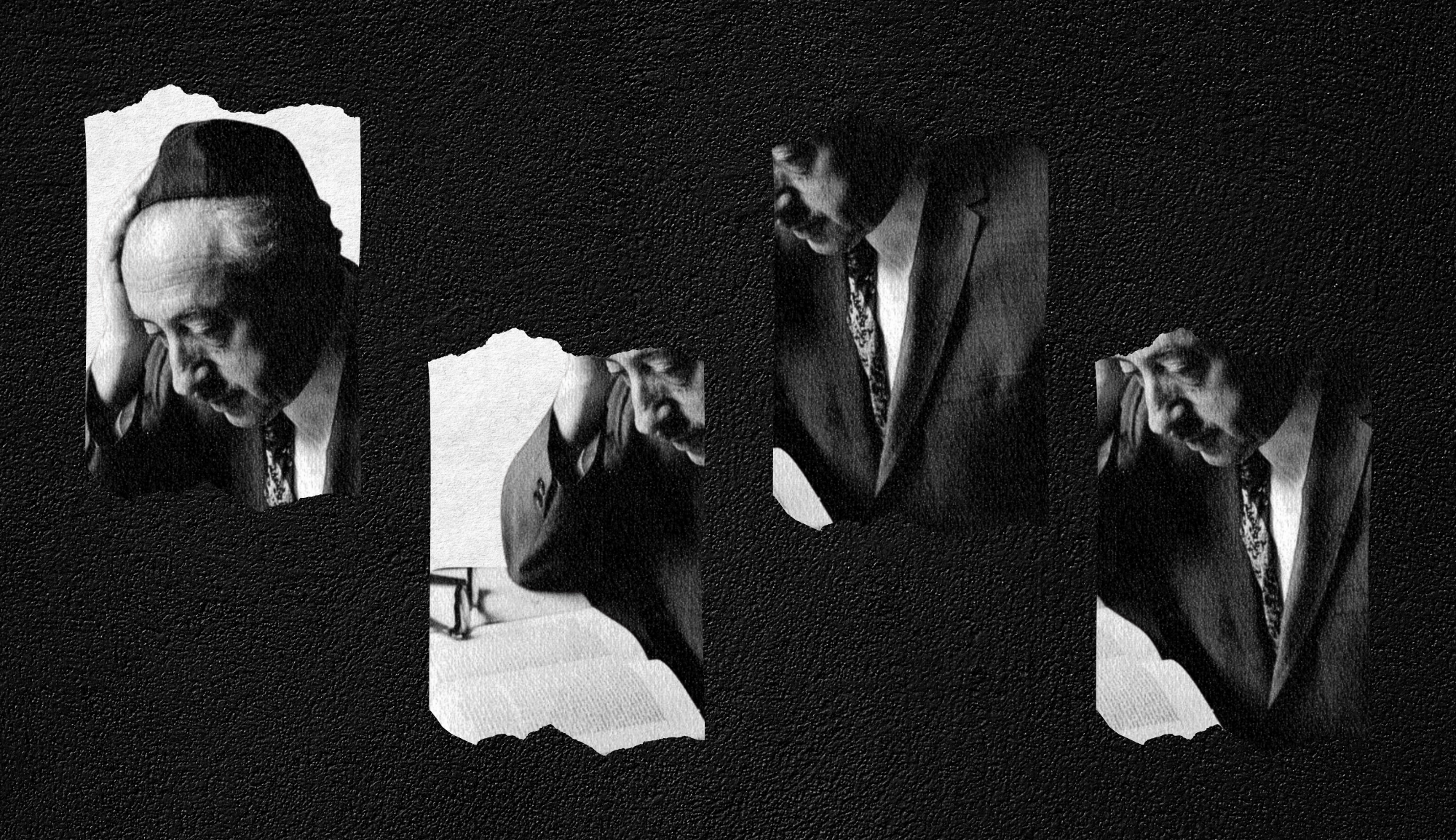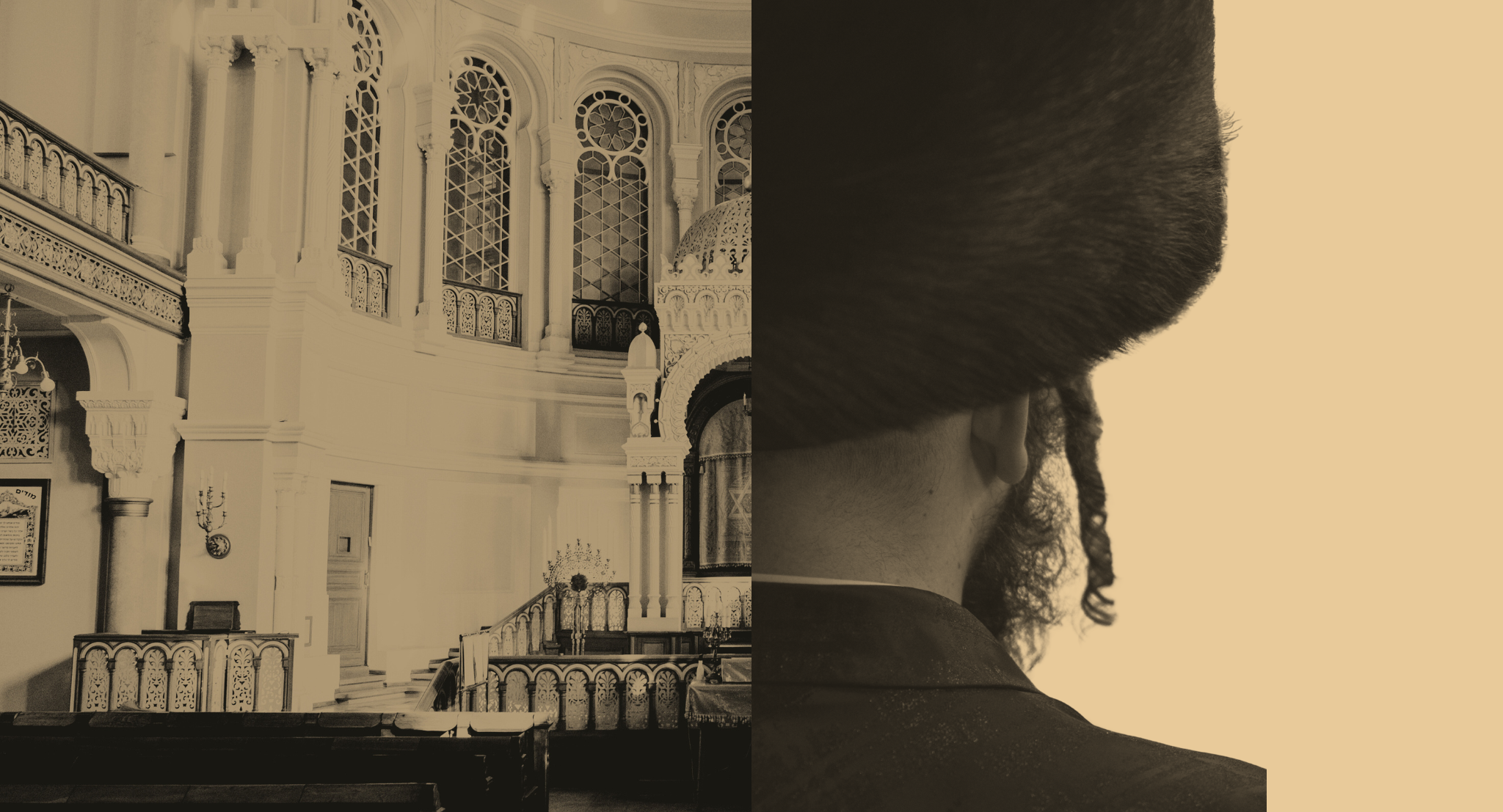
Summary
In this episode of the 18Forty Podcast, we sit down for a special podcast with our host, David Bashevkin, to discuss the podcast’s namesake, the year 1840.
Though humanity’s history is long and rich, it’s only recently that the world has begun to look like we’re used to. From the renaissance to the scientific and industrial revolutions, technology and information seem to be progressing at an exponential rate. Judaism, along with all tradition, had to contend with modernity as we now know it for the first time. Most of modern Jewry has been affected in some way or another by this modernization of its members.
- What historical significance does the year 1840 have?
- What challenges did it bring for Judaism and other traditions?
- How did Judaism respond to those challenges?
- And in the end, how does modern Judaism differ from its other historical iterations?
Tune in to hear David share why the year 1840 holds such significance for him, and how he feels its effects in his life.
References:
The Europeans Review – https://www.nytimes.com/2019/10/28/books/review/the-europeans-orlando-figes.html
Israel Bartal article – https://link.springer.com/article/10.1007/s10835-005-5978-7
Zohar
The Europeans by Orlando Figes
Jewish Continuity in America – Abraham J. Karp
Zichron Yaakov by Rabbi Yaakov Lipschutz
Sapiens by Yuval Harari
Transcript
David Bashevkin:
Hi friends, and welcome to the 18Forty Podcast, where each month we explore a different topic balancing modern sensibilities with traditional sensitivities to give you new approaches to timeless Jewish ideas. I’m your host, David Bashevkin, and this month… Well, this month we’re not really exploring a new topic, we’re actually on break for January. Instead of just going blank, what we’ve chosen to do instead is reach into the vault and pull out some of the older topics and discussions and provide a little bit more context and ideas behind them. Maybe dust them off and see if we can explore them in a new light.
So on today’s podcast, what we really want to talk about and discuss is, why “18Forty?” “What’s the story with your name?” Many people ask me this all the time, and I always tell them, “Why did you choose the name 18Forty?” My usual response is that we ran out of Jewish acronyms with the letter ‘J’, like “J star,” “J wow,” “J pop,” ‘J’ anything. We have no more acronyms left with the letter ‘J’ in, so Jewish institutions, organizations, we need to find something else to call our programs, podcasts, and institutions.
The real reason, and it took a lot of explaining when we first started to the people I was working with, they all looked at me like this is some Nate Silver, calling a program after a number type of thing. But this number, which is really a calendaric year for 18Forty, has been a part of my life really before we launched any podcasts, before I wrote anything. It really goes back to my early inception, where I became connected to the Hasidic world, as many of you have heard on the podcast, of Reb Tzadok. Reb Tzadok, those of you may or may not know, was a Hasidic leader who had these modern sensibilities with traditional sensitivities, as I often say. He was born in 1823, he died in 1900. He wasn’t born Hasidic. He was born a regular non-Hasidic Jew, and his life quite literally began to fall apart. His marriage fell apart, and he started wandering really in his late teens throughout Europe by himself. He stumbled across this Beis Medrish known as Izhbitz, that was run by the Hasidic leader named Rav Mordechai Yosef Leiner, who affectionately is known as the Izhbitzer Rebbe. The school of Izhbitz Chassidus, which is the Rebbe of Reb Tzadok, who I’ve been enamored with and has animated so much of my thought and ideas, and really everything I do and the life that I choose to live. The Izhbitzer began his Hasidic court, as you’re about to here, in the year, 1839-1840, the Jewish calendaric year of Taf Resh. The Izhbitzer began his Hasidic court in the year Taf Resh, which is the year 1839-1840.
This was not an insignificant year. It was a year in the secular world of a great deal of change, where it felt like people were being pulled into this ocean of modernity and this world of figuring out what your identity is. What does it mean to be alive and to contribute to society in this entirely new world. In the Jewish world it had special significance because this was the year, as the Zohar writes, which is the 600th year in the 6th millennium, which the Zohar, this Kabbalistic text, said that the gates of wisdom are going to open up. And as we’re going to discuss, different people had different reactions to what exactly that would mean. There wasn’t any clear revelation in the year 1840. But what made Izhbitz so unique, and what became the inspiration for all of the conversations that we have, is the idea that with transition, with trauma, with chaos, with dissonance, with all of the questions that arise out of the world that we live in, there also comes opportunity. And opportunity doesn’t come despite challenges, opportunity comes because of challenges.
I think that’s the world that was opened up in 1840. It was a unique world that saw the challenges of the modern world, not exclusively as, and there were plenty of challenges undermining religious commitment and religious identity, all of that stuff. But there was another way to look at all of that rupture and see the possibility to confront and think about questions that we never had the opportunity to consider. I think that’s why, underneath all of the ideas, I chose this rather ridiculous name, and we chose it. I actually like that we chose it with half numbers, half letters. It’s bifurcating those two worlds, that sequential numeric world that’s very rational and everything adds up and follows very sequentially, that more narrative world, like we spell it on our website or anything. 18 is 1-8 and 40 is spelled F-O-R-T-Y. It’s that combination of letters of numbers, the combination of narrative and building stories and ideas and wedding that with that cold sober world of numbers, that 1-8 that begins our name with. It wasn’t just Izhbitz that was affected by this. I know my dear friend, Reb Joey Rosenfeld, who we have had on this podcast earlier when we were discussing mysticism, he wrote a rather remarkable article about Rabbi Shlomo Elyashiv. Reb Shlomo Elyashiv, who’s known as the Leshem. He was born in the year 1841, this Joey pointed out to me. He doesn’t write it explicitly, but he does write about the significance of 1840. The Leshem, who’s the grandfather, many of you may know his grandson, Rav Elyashiv, who was a major Hasidic – I’m sorry – a major Halachic leader in really all of world global Jewry, but lived in Israel, in Eretz Yisrael, for many, many years, and we lost him a few years ago.
But his grandfather, Rav Shlomo Elyashiv, the Leshem, was born in 1841, and he quotes Rav Yisrael Salanter as follows, and I’m quoting from this amazing article that Joey wrote: “And permission has been granted to all those who engage this wisdom to understand these ideas, talking about mysticism each according to their level. Specifically from the year Taf Resh, 1840, and onwards, as it is written in the Zohar, ‘in the 600th year of the 6th millennium, the gates of the higher wisdom, chochma iluy, were opened.’ And what the Zohar meant in writing ‘opened,’ this means to say that permission has been granted to all those who yearn to cleave with the living God, to engage in chochmas emes, in true knowledge, to enter and utilize the name of God properly. Anyone who delves into this matter will be enlightened and find that this was not the case before the year Taf Resh, 1840, because then it was still hidden and closed except for a few exceptional individuals. So have I heard,” this is Rav Eliyashiv writing, the Leshem, “in the name of the goan and chassid Rav Yisrael Salanter, and all of this is rooted in the revelation of supernal light that is revealed above and egresses below as it draws into this world, olam hazeh, additional light, and the secrets of Torah were revealed in order to rectify the world for the eventual rectification.”
Now that seems very lofty and quite mystical, but it animates so much of what we’re doing here. We’re able to ask, confront, the questions. However difficult, however troublesome, we don’t shy away. We realize that Torah, however challenging, however difficult, however much people may prevent us from developing a relationship with religious commitment and religious life and with Judaism and with Yiddishkeit, however all those difficulties may seem, there is a unique opportunity in this moment, today, in the year 2020, still inspired from those gates that opened up in that tumultuous year of 1840.
We chose a very strange name for this initiative, and I want to share a little bit of the Torah and inspiration for why on earth you would name an initiative after a calendaric year. Of all the things in the world, what excites people is not the mid 1800’s. When you say the word 19th century, that’s not usually what excites people about their Jewish identity. It excites me, but it doesn’t excite most people. I want to share a little bit about why this year, and 1840 in particular, actually means a great deal and stands at the center, in many ways, of my Jewish identity, and I think in many ways collectively, as a people, wherever we are in Jewish life, we are repeating many of the same questions and challenges that had once appeared in the year 1840. I want to begin with a New York Times review of what is really a brilliant book by Orlando Figes called The Europeans.
The review starts as follows. “Imagine a society where, within the space of a single generation, human innovation all but collapses the most formidable geographic distances, allowing individuals and information to travel the globe with unprecedented swiftness and ease. Where new platforms radically transformed the ways in which news, music, books, and art are created and consumed. Where media driven celebrity trumps older modes of authority and forms new elites, endowing famous artists and performers with peerless cache. Where audiences converge in a worldwide culture of “sharing,” and diversity and connectedness join equality and freedom as the shibboleths of Western liberalism. Where, at the same time, legislation struggles to keep pace with technological change; capitalism and consumerism destroy even as they enrich; and nationalism, racism and xenophobia poison the public discourse, threatening disaster. This is the society Orlando Figes examines in The Europeans… ‘an international culture that vanished on the outbreak of the First World War.’”
“‘The Europeans,’” and this is the center of the book, “begins by discussing the inauguration in the 1840s of Europe’s first international railroad lines.” If you read that description and thought that it was describing maybe 2008, maybe 2020, maybe 2019, you are wrong. The imagination of a society where, “in the single space of a generation, human innovation all but collapses the most formidable geographic distances,” is not describing the internet, it’s not describing modern society, it’s describing the way the world changed in the middle of the 19th century in the year 1840. This was a year that, not only the world changed because of capitalism, and the way people were connected, and the railroad: the Jewish community itself also changed in very significant ways.
There is a fabulous book that I would recommend you reading. It’s not super hard to find, I bought it fairly cheap. It’s called Jewish Continuity in America by Abraham Karp, who was a brilliant historian. I think he was also a Conservative rabbi. It’s a very, very beautiful book that talks about early American history. He was asked, and he has a chapter in the book that asks: When did American Judaism, the Judaism that we know today, the Judaism of Reform, Conservative and Orthodox, of different denominations, of different identities, when did that begin? This is what he writes: “Initially attempts were made to fashion an American Judaism. The first attempt at a national religious union had its roots in a far off anti-Jewish outrage. The so called Damascus affair, which was a blood libel of sorts where the Jewish community was accused of killing a young child. Following the disappearance of a Catholic priest there in February, 1840, the Jews of Damascus were accused of his murder in order to take his blood for use in their unleavened bread. A classic blood libel. Scores were imprisoned, children were seized and held as hostages, and a wide scale massacre was imminent. Jewish communities the world over were shocked and aroused, and those who dared organize and speak protests did so.
“The news from Syria in Damascus in 1840 galvanized the Jews of America into action. The Jews of New York, Philadelphia, Cincinnati, and Richmond united in communal expression of horror, sympathy, and indignation. Participation in a common cause, and so many of us remember what it feels like to have that self-conscious Jewish unity. Jewish unity that’s not instinctual, but a Jewish unity where we’re acknowledging the fact that different streams of Judaism and different kinds of Jews are consciously coming together for one cause. Participation in a common cause that so excited the emotions brought the scattering disparate elements of the American Jewish community together in a communion of spirit and concern. It has been suggested,” and this is the key line, “that modern Jewish history dates from the Damascus affair, 1840. Certainly the American Jewish community had its beginnings as a self-conscious entity in the activity precipitated by the massacre in Damascus.”
If you think of the last year or two and the anti-Semitism that swept across the United States, there was both an optimism and a sweetness, but also a sadness that characterized the unity. In the sense that it was almost innovative, the fact that we were getting together, it was a self-conscious unity. It was a unity that was deliberately stretching our arm across the aisle. When did that kind of unity begin? When did we become self-aware of the latent divisions that we have throughout our community? The first time this self-conscious unity started, the first time that different organizations came together and said, ‘Whose logo’s going to be on the flyer, and who’s going to speak first, and can we all be on the same podium? When can we talk together?’ This began in 1840. 1840 was more than just a year of the beginning of the railroad. It was more than just a year where the Jewish community came together in unity. It was a year, like many years on the Jewish calendar, that actually has some measure of messianic fervor. If you know, the year 1840 is the end of the 6th century of the 6th millennium. It’s the beginning, if you look at the arc of the Jewish calendar, it’s so to speak the beginning of Erev Shabbos. If every millennium is a day, then the entrance into the 6th millennium, the Friday, so to speak, of our collective calendar, our collective consciousness, the entrance into that sixth millennium, the sixth century, 5600, is the year 1840.”
And in the Zohar, in Parshas Noach, it says as follows. This was from an article by Israel Bartal, “Messianism and Nationalism: Liberal Optimism vs. Orthodox Anxiety.” He says as follows: “A new age began for our nation in the year 5600 with both its material and spiritual events. Those who reckon the end of days have been waiting for that year. That year had already been singled out precisely, as if in a prophecy, in the holy Zohar.” Who is writing these words? Thus did Jacob Lipschutz, Yaakov Lipschutz, one of the most prominent Orthodox activists in the Russian empire, the author of Zichron Yakov: The History of Jews in Russia and Poland. But let me just say two quick, interesting vignettes about Yaakov Lipschutz that happen to be absolutely fascinating.
Number one, Yaakov Lipschutz was the secretary, he was the right hand man of Reb Yitzchak Elchanan. He was the handler, so to speak, of Reb Yitzchak Elchanon Spektor, who was the singular gadol hador, the recognized central leader of the Jewish community. But he was like that right-hand man, he was a very right-wing person, and there was a funny letter that the Aruch HaShulchan, Reb Yechiel Michel Epstein, writes, where he says, “I wrote a letter to Reb Yitzchak Elchanan Spektor, but the problem is, these days, you don’t know who’s responding, if he’s going to respond, or one of his handlers is going to respond.” He’s referring to Rav Yaakov Lipschutz, who was his handler of sorts. When you write a major email to a leader of an organization, a leader in government, you don’t really know if the response you’re getting back is from that actual person. He was that right-hand man.
Second fun fact, for those who love right-wing Haredi media as much as I do, the paper of record in the Haredi community in America, is put it in the chat if you want to guess, is called the Yated Ne’eman. The Yated Ne’eman is the Haredi newspaper of American Jewry. The Yated Ne’eman’s Editor in Chief is an amazing communal activist named Pinny Lipschutz. Pinny Lipschutz is Yaakov Lipschutz’s great-grandson. Fun fact for those Yated Ne’eman fans out there, I know there are hundreds. I don’t know if they’re all on the call right now, but I know you’re out there. So Yaacov Lipschutz read the Zohar, which spoke about the significance of the year 1840, and he actually wrote in this sefer, which I have, Zichron Yaakov, and he actually dismissed it.
I’m going to skip to this paragraph. “The apocalyptics calculated that this year was the time set for the redemption, according to the tradition, as with every other year concerning, which there are illusions to the ends of days in redemption. And there were other times that the Jewish people thought they were going to be redeemed, which, because of the sins of the generation that did not merit redemption because of the time of untoward events, disasters, and evil decrees. So to, they calculate that the year 5600 was a set time, and its many untoward events and disasters are well-known.” What he points out to is that in this year, he actually identifies all of the technological innovation, and he dismisses it. He says, this isn’t really such a remarkable year. This has been a terrible year. Jews are leaving religion faster than ever, Jews don’t care about their identity, Jews don’t care about Torah, Jews aren’t thinking about God, and we are being subject to unprecedented anti-Semitism. And he takes a very pessimistic point of view about the significance of this year. Maybe it was significant, but because we messed up so much, because people are so rowdy, people are so rebellious, so there’s not going to be a redemption. There’s not going to be anything special about this year, 1840.
But there were other approaches to this year as well from within the Jewish community. And those of you who know me well know that the person and the thinker in my life who’s had the largest influence in my life is a thinker known as Reb Tzadok HaKohen MiLublin. Reb Tzadok was born in 1823, and he died in the year 1900. Reb Tzadok was not raised in a Hasidic home. He was raised as a traditional, analytic Talmud scholar. We have responsa that – he wrote two volumes of responsa called Tiferes Tzvi, and he became a Chassid in his late adolescence in the court of Izhbitz. His Rebbe was Mordechai Yosef Leiner, who was known as the Izhbitzer Rebbe. Now, the Izhbitzer Rebbe has a fascinating history of his own, this Rebbe of Reb Tzadok. He came from many, three different rebellions from within the Hasidic world. The Hasidic world itself was a rebellion ushered in by the Baal Shem Tov that basically said, “You can find God everywhere. He can be found, even in the nooks and crannies, even in the rebels, even in the people who are seemingly going against and could care less for God. You could find God there too.
And then there was a second rebellion. The second rebellion, many years after the initiation of Chassidus, the second rebellion was the rebellion of Peshischa. The world of Peshischa basically said that after a chassidus became institutionalized, after the Rebbe began sitting at the head of the table, Peshischa said, “We’re too Rebbe centric. We’re too focused on the leadership. We have to be focused on the chassidim.” The story that I love, which kind of encapsulates the novelty of Peshischa chassidus, is that somebody one time went to a Rebbe and he said, Rebbe, I want to start my own Hasidic movement. And the Rebbe looked at him and said, “What on earth gave you the idea that you should start your own Hasidic movement?” He said, “Every single night I have this very vivid dream. And in the dream, I’m sitting at the head of the table, and it’s a farbrengen, and everybody’s singing and dancing. And I have all of my chassidim, all of my followers lined up, hundreds of people, and they’re all singing along with me. And I’m having this dream every other night. It must be that I’m ready to start my own chassidus, start my own Jewish revolution.” And the person pinched him on the cheek and said, “Bubele, you don’t start your own chassidus when you have a dream that you have 300 chassidim; you start your own chassidus when 300 chassidim have a dream that you’re their Rebbe.” There’s a difference between starting a movement because you have these grand visions of you being the leader, and there’s a difference between a movement that comes bottom up where the followers, where the people envision, for themselves, a movement that’s going to gather and collect them all together.
That was the world of Peshischa. It says we don’t need a Rebbe at the center. The great student of Reb Simcha Bunim of Peshischa, who was a professional, he was a pharmacist with somebody named the Kotzker. There are a lot of amazing books about the Kotzker, and the Kotzker Rebbe, Reb Menachem Mendel, was the Rebbe of the Izhbitzer. But the Izhbitzer Rebbe studied with the Kotzker Rebbe for 13 years, and then he broke off and started his own Hasidic movement. The year that he broke off and started his own Hasidic movement was the year 1840 – 1839, 1840 when he started his own movement. And on that Simchas Torah he decided that he wanted to start his own movement. The issue he had with the Kotzker was an issue of, you could break it down into a few different ways, but the way I would explain, and the way I’ve heard it explained, is that the Kotzker was running on the express track. He was the A train. He wanted the elite who were ready to scream at the top of the mountain, sacrifice everything, and dedicate their lives to God. And the Izhbitzer looked around and said, no way, no how, we need a local track. We need a track that explains the beauty and the significance of Jewish life for people who aren’t ready to go all the way to the end of the destination, to ride the A train all the way from 125 to 59th street. You’ve got to have smaller stops for people who can get on board and become a part of that movement.
And if you look at the introduction that was written by the Izhbitzer’s grandson – the famed Hasidic scholar, Rav Gershon Henoch Weiner, who was famous for, he was a scientist and a scholar – he writes in his introduction that his father, I’m not going to read it all inside, he says his father, at 13 years, where he learned in pain in the Maras Adullam, which is alluding to the cave where Dovid Hamelech ran when he was hiding from the Shaul, he’s referring to his years when he was studying with the Kotzker. Afterwards, he left, and he started his own movement. And he couches that time, and I’ll read it, “B’higiya hazman v’ruach Hashem heichel livamo b’shashesh meah me’elef hashishi, the time came, in the sixth millennia, the end of the sixth century, hu ha’es asher alav ramaz Rebbe Shimon bar Yochai b’Zohar hakadosh, it was specifically that year, that was alluded to by Reb Shimon Bar Yochai.” The actual words of the Zohar, which I have in Hebrew and in Aramaic, describes a time and I’ll read, just right over here in this first paragraph, “Vik’asher yavo eleph hashishi, when the six millennium will come, shehu sod havav, is the idea of the vav.”
The letter vav is what connects words together. It’s what connects society together. It’s what shows that – the consilience, the underlying values, that bind us all together. That’s the vav. When you put a vav in front of a word, its connected the word “and”. “U’besheish meos shana l’elef hashishi,” these are the words of the Zohar, “yiftichu sharei hachachma l’mala umayanus hachachma limata, the gates of wisdom are going to be opened up above, and the springs of wisdom are going to be opened up below.” And this is what the Izhbitzer said. And he said something so interesting. He actually pointed to a time, “v’haynu,” over here he says, “sheyiskarbu divrei Torah l’hasagas ha’adam v’tefisaso, there’s going to become a time where Torah, where religious value, of the idea of God, are going to be graspable. We’re going to be able to grasp them and connect with them.
And he actually points to the very fact that this is a generation where people are rebelling, where this is a generation where people are questioning authority, where this is a generation where people don’t feel tethered to the same norms and institutional structures that they once had. That’s exactly why this is deliberately the time to start talking about religious ideas in new ways. Because just like the revolution of the Izhbitzer himself was a revolution about, against the institutionalization of the role of the Rebbe, the institutionalization which divides between the masses and the elite. They said, this is the right year, because this is the year where society itself is being stirred up, where people are asking questions against the authority that they never would have had the liberty or the audacity to ask directly. And suddenly we’re living in this society. And that was the year 1840.
It was a year of great confusion, where all of the financial, capitalist, religious, authoritarian structures were turned upside down. Society overturned within a year. The Jewish community began to look at itself in a different way, unity was no longer instinctive, it was something self-conscious. There were – we were much more self-aware of what divided us in order to come together to have that vav, that hand, in the way we associate with one another, it took a little bit of motivation. It took a Damascus affair. But the Izhbitzer looked at this very same year, the Izhbitzer looked at this very same moment, and he said, “This is a moment of opportunity. It’s not the end of religion; it’s the beginning. It’s the questioning of authority that is ripe to start engaging people with questions and ideas that otherwise would have been dismissed, maybe by the elite, or maybe by the people themselves who couldn’t have handled it.”
And that’s why this project, to me, is anchored in the year 1840. We began a website, and you can look at it. I’m more than happy to pull it up. The website is called 18, 18Forty.org. And it’s a website that I hope is going to approach Jewish questions, and life questions, in a way that haven’t been discussed previously. Every month we’re going to have a different topic, and you can look at the initial topics over here. We’re talking about Talmud, comedy, leaving religion, and biblical criticism. And we have future topics at the bottom. We’re going to be talking about these topics in ways that maybe our traditional organizations weren’t necessarily equipped to do, but that’s part of the spirit of 18Forty, is ushering in a freedom and an excitement that allows us to approach questions of our religious identity and our mesorah in ways that maybe haven’t been discussed in this very same way.
I think it’s a very exciting time, and I’m so appreciative, both to Mitch and really to NCSY for being so excited, and for giving the support and patience for this project. I want to end with a quote, and it’s a quote that I have in the video. If you look at every month, like, let’s say, the month of Talmud, which we began with. It starts with a video and we have text, we have wonderful texts. And then there are these podcasts and interviews with different world-renowned scholars on every subject. And then at the bottom we have this reading list. But if you look in this opening video for Talmud, which I’m not going to show you right now, there’s a quote I read many years ago from Yuval Harari, the author of the book Sapiens. And I think in many ways it cuts to the core of the question that we’re in right now in 2020, it cuts to the heart of the anxiety of the year 1840, and in many ways it encapsulates what I think the opportunities that this initiative will hopefully uncover.
He writes as follows: “As robots and AI push humans out of the job market, the ultra-Orthodox may come to be seen as the model of the future rather than as a fossil of the past. Not that everyone will become Orthodox Jews and go to yeshivas to study Talmud, but in the lives of all people, the quest for meaning and for community might eclipse the quest for a job”. Let me be absolutely clear. Yuval Harari is not religious. Yuval Harari is not an ultra-Orthodox Jew. But Yuval Harari, in his book talking about the large trends of humanity, actually looks to the Jewish community and says, “Maybe they are onto something that others don’t see.” And particularly in the painful time that we’re in now, where words, and these feelings of what it means to be essential and non-essential, what it means to have your identity be so wrapped up in your job and in your profession. For the first time, people are asking questions about what gives me meaning in my life. And I know that’s the question that drives Mitch every single day and every single infuriating phone call that we have weekly, and I love him, and he knows that, but it’s the question that I think is at the heart of the religious experience. That, “Can we create a Yiddishkeit, can we create a Judaism, that in the lives of all people, the quest for meaning and the quest for community is going to eclipse that quest for a job?”
And we’re in that time now, cause we know, we know that society right now is grappling with the level and amount of meaning that a job and a profession and success will provide. And we have something else. We have that quest for meaning, and we have that community, and hopefully together, with the new ideas, with the new structure, with questioning authority and looking at the way that the world is evolving, not as a sign of doom of the end of religion, but looking at all of these opportunities as just the beginning. Thank you all so much. I’m so excited to share this journey with you together. Have a great night.
So I hope you enjoyed that overview. We have links to all of the articles and sources that were quoted inside. If you want to explore more about the historical year 1840 and all of the challenges and opportunities that came along with that year, I actually wrote an article about this for Tablet, my dear friends at Tablet. I wrote an article called, “Want to Understand 2020? Look at 1840.” And I actually closed the article with the following, and I’ll read it for you now. I published this right before the new year of 2020. We’re already way deep into January, New Years feels like ages ago, but I still think it’s relevant today, and this is how I closed that article reflecting on how 1840 is still relevant at the close of 2020. And here we are in January and I still think it is relevant now. And this is what I wrote.
“And so, now that its almost New Year’s Eve and our minds are still set on renewal, let us remember one last teaching as we prepare for the final leg of this terrible, horrible, no good, very bad year. The Talmud, in Tractate Megilah 31b, says that we read the curses at the end of the Torah right before Rosh Hashanah as a reminder that the year should end along with its curses and a new year should begin with all of its blessings. This year, 2020, as we all know, certainly feels like an apt year for such a prayer. But 1840 is a reminder that blessings don’t emerge in a vacuum. They arive not in spite of generational challenges but because of the challenges that each year faces. So in that sense, 2020 should end along with its curses and propel us to see the blessings and opportunities that 2021 brings our way. And I hope that’s true for all of our listeners that this 2021 is a year of safety, health, and happiness that we are tichle shana bkiloseha, we close the previous, secular calendar year with all of its curses and we begin a new year, ubirchoseha, with all of its blessings.
So thank you so much for listening. If you enjoyed this episode, or any episode, please subscribe, rate, and review. Tell your friends about it. It really helps us reach new listeners and continue putting out great content. If you’d like to learn more about this topic or some of the other great topics we’ve already covered, be sure to check out 18Forty.org. That’s the number 1-8 followed by the word “forty,” F-O-R-T-Y.org, 18Forty.org. You’ll also find videos, articles, recommended readings, and tons of other great stuff. Thank you so much for listening and stay curious.
Recommended Podcasts
podcast
Hadas Hershkovitz: On Loss: A Husband, Father, Soldier
In this episode of the 18Forty Podcast, we speak with Hadas Hershkovitz, whose husband, Yossi, was killed while serving on reserve duty in Gaza in 2023—about the Jewish People’s loss of this beloved spouse, father, high-school principal, and soldier.
podcast
Haviv Rettig Gur: ‘Hamas is upset the death toll in Gaza isn’t higher’
Haviv answers 18 questions on Israel.
podcast
Elissa Felder & Sonia Hoffman: How the Jewish Burial Society Cares for the Dead
Elissa Felder and Sonia Hoffman serve on a chevra kadisha and teach us about confronting death.
podcast
How Different Jewish Communities Date
On this episode of 18Forty, we explore the world of Jewish dating.
podcast
Red Flags: A Conversation with Shalom Task Force Featuring Esther Williams and Shana Frydman
We have a deeply moving conversation on the topic of red flags in relationships.
podcast
Einat Wilf: ‘Jews Are Never Allowed To Win, and Arabs Are Never Allowed to Lose’
The true enemy in Israel’s current war, Einat Wilf says, is what she calls “Palestinianism.”
podcast
The Dardik Family: A Child Moves Away From Zionism
In this episode of the 18Forty Podcast, we talk to Judah, Naomi, and Aharon Akiva Dardik—an olim family whose son went to military jail for refusing to follow to IDF orders and has since become a ceasefire activist at Columbia University—about sticking together as a family despite their fundamental differences.
podcast
Aliza and Ephraim Bulow: When A Spouse Loses Faith
In this episode of the 18Forty Podcast, we talk to Aliza and Ephraim Bulow, a married couple whose religious paths diverged over the course of their shared life.
podcast
Shlomo Brody & Beth Popp: Demystifying Death and the End of Life
In this episode of the 18Forty Podcast, we talk to Rabbi Shlomo Brody and Dr. Beth Popp.
podcast
‘Everything About Her Was Worth It’: The Life of Yakira Leeba Schwartz A”H
In this episode of the 18Forty Podcast, we talk to Yisroel Besser, who authored many rabbinic biographies and brought David Bashevkin to Mishpacha magazine, about sharing Jewish stories.
podcast
Menachem Penner & Gedalia Robinson: A Child’s Orientation
In this episode of the 18Forty Podcast, we talk to Rabbi Menachem Penner—dean of RIETS at Yeshiva University—and his son Gedalia—a musician, cantor-in-training, and member of the LGBTQ community—about their experience in reconciling their family’s religious tradition with Gedalia’s sexual orientation.
podcast
Benny Morris: ‘We should have taken Rafah at the start’
Leading Israeli historian Benny Morris answers 18 questions on Israel, including Gaza, Palestinian-Israeli peace prospects, morality, and so much more.
podcast
Rabbi Meir Triebitz: How Should We Approach the Science of the Torah?
In this episode of the 18Forty Podcast, we sit down with Rabbi Meir Triebitz – Rosh Yeshiva, PhD, and expert on matters of science and the Torah – to discuss what kind of science we can learn from the Torah.
podcast
Anshel Pfeffer: ‘The idea that you’ll obliterate Hamas is as realistic as wanting to obliterate Chabad’
Prime Minister Benjamin Netanyahu did not surprise Anshel Pfeffer over the last 17 months of war—and that’s the most disappointing part.
podcast
Larry and Tzipora Rothwachs: Here Without You — A Child’s Eating Disorder
In this episode of the 18Forty Podcast, we talk to Rabbi Larry Rothwachs and his daughter Tzipora about the relationship of a father and daughter through distance while battling an eating disorder.
podcast
Anita Shapira: ‘You cannot wipe out Hamas’
Leading Israel historian Anita Shapira answers 18 questions on Israel, including destroying Hamas, the crisis up North, and Israel’s future.
podcast
Talia Khan: A Jewish Israel Activist and Her Muslim Father
In this episode of the 18Forty Podcast, we talk to Talia Khan—a Jewish MIT graduate student and Israel activist—and her father, an Afghan Muslim immigrant, about their close father-daughter relationship despite their ideological disagreements.
podcast
Frieda Vizel: How the World Misunderstands Hasidic Jewry
In this episode of the 18Forty Podcast, we talk to Frieda Vizel—a formerly Satmar Jew who makes educational content about Hasidic life—about her work presenting Hasidic Williamsburg to the outside world, and vice-versa.
podcast
Gadi Taub: ‘We should annex the north third of the Gaza Strip’
Gadi answers 18 questions on Israel, including judicial reform, Gaza’s future, and the Palestinian Authority.
podcast
Lizzy Savetsky: Becoming a Jewish Influencer and Israel Advocate
In this episode of the 18Forty Podcast, we talk to Lizzy Savetsky, who went from a career in singing and fashion to being a Jewish activist and influencer, about her work advocating for Israel online.
podcast
Mikhael Manekin: ‘This is a land of two peoples, and I don’t view that as a problem’
Wishing Arabs would disappear from Israel, Mikhael Manekin says, is a dangerous fantasy.
podcast
Yishai Fleisher: ‘Israel is not meant to be equal for all — it’s a nation-state’
Israel should prioritize its Jewish citizens, Yishai Fleisher says, because that’s what a nation-state does.
podcast
On Loss: A Spouse
In this episode of the 18Forty Podcast, we talk to Rabbi Josh Grajower – rabbi and educator – about the loss of his wife, as well as the loss that Tisha B’Av represents for the Jewish People.
Recommended Articles
Essays
This Week in Jewish History: The Nine Days and the Ninth of Av
Tisha B’Av, explains Maimonides, is a reminder that our collective fate rests on our choices.
Essays
I Like to Learn Talmud the Way I Learn Shakespeare
If Shakespeare’s words could move me, why didn’t Abaye’s?
Essays
3 Arguments for God’s Existence
Perhaps the most fundamental question any religious believer can ask is: “Does God exist?” It’s time we find good answers.
Essays
Fighting for My Father’s Life Was a Victory in its Own Way
After losing my father to Stage IV pancreatic cancer, I choose to hold onto the memories of his life.
Essays
Books 18Forty Recommends You Read About Loss
They cover maternal grief, surreal mourning, preserving faith, and more.
Essays
Benny Morris Has Thoughts on Israel, the War, and Our Future
We interviewed this leading Israeli historian on the critical questions on Israel today—and he had what to say.
Essays
Why Reading Is Not Enough for Judaism
In my journey to embrace my Judaism, I realized that we need the mimetic Jewish tradition, too.
Essays
A Letter to Children Estranged From Their Parents
Children cannot truly avoid the consequences of estrangement. Their parents’ shadow will always follow.
Essays
‘The Crisis of Experience’: What Singlehood Means in a Married Community
I spent months interviewing single, Jewish adults. The way we think about—and treat—singlehood in the Jewish community needs to change. Here’s how.
Essays
3 Questions To Ask Yourself Whenever You Hear a Dvar Torah
Not every Jewish educational institution that I was in supported such questions, and in fact, many did not invite questions such as…
Essays
(What) Do Jews Believe About the Afterlife?
Christianity’s focus on the afterlife historically discouraged Jews from discussing it—but Jews very much believe in it.
Essays
Do You Need a Rabbi, or a Therapist?
As someone who worked as both clinician and rabbi, I’ve learned to ask three central questions to find an answer.
Essays
Between Modern Orthodoxy and Religious Zionism: At Home as an Immigrant
My family made aliyah over a decade ago. Navigating our lives as American immigrants in Israel is a day-to-day balance.
Essays
Do We Know Why God Allows Evil and Suffering?
What are Jews to say when facing “atheism’s killer argument”?
Essays
The Erasure of Sephardic Jewry
Half of Jewish law and history stem from Sephardic Jewry. It’s time we properly teach that.
Essays
From Hawk to Dove: The Path(s) of Yossi Klein Halevi
With the hindsight of more than 20 years, Halevi’s path from hawk to dove is easily discernible. But was it at every…
Essays
Judith Herman Is Giving Voice to Survivors
Dr. Judith Herman has spent her career helping those who are going through trauma, and has provided far-reaching insight into the field.
Essays
‘Are Your Brothers To Go to War While You Stay Here?’: On Haredim Drafting to the IDF
A Hezbollah missile killed Rabbi Dr. Tamir Granot’s son, Amitai Tzvi, on Oct. 15. Here, he pleas for Haredim to enlist into…
Essays
The Hardal Community Explained: Torah, Am Yisrael, and Redemption
Religious Zionism is a spectrum—and I would place my Hardal community on the right of that spectrum.
Essays
A Brief History of Jewish Mysticism
To talk about the history of Jewish mysticism is in many ways to talk about the history of the mystical community.
Essays
Rabbi Eliezer Berkovits’ Complicated Portrait of Faith
Meet a traditional rabbi in an untraditional time, willing to deal with faith in all its beauty—and hardships.
Essays
How and Why I Became a Hasidic Feminist
The Lubavitcher Rebbe’s brand of feminism resolved the paradoxes of Western feminism that confounded me since I was young.
Essays
When Losing Faith Means Losing Yourself
Elisha ben Abuyah thought he lost himself forever. Was that true?
Recommended Videos
videos
Mysticism
In a disenchanted world, we can turn to mysticism to find enchantment, to remember that there is something more under the surface…
videos
18Forty: Exploring Big Questions (An Introduction)
18Forty is a new media company that helps users find meaning in their lives through the exploration of Jewish thought and ideas.…
videos
Talmud
There is circularity that underlies nearly all of rabbinic law. Open up the first page of Talmud and it already assumes that…
videos
The Hasidic Rebbe Who Left it All — And Then Returned
Why did this Hasidic Rebbe move from Poland to Israel, only to change his name, leave religion, and disappear to Los Angeles?
videos
Did Judaism Evolve? | Origins of Judaism
Has Judaism changed through history? While many of us know that Judaism has changed over time, our conversations around these changes are…
videos
Jonathan Rosenblum Answers 18 Questions on the Haredi Draft, Netanyahu, and a Religious State
Talking about the “Haredi community” is a misnomer, Jonathan Rosenblum says, and simplifies its diversity of thought and perspectives. A Yale-trained lawyer…
